
“I Wove You!” For young children, substitutions of the /l/ sound are common, but when should ‘wove’ become ‘love’?
The /l/ sound is characterized as one of the ‘late eight’ sounds or, the later developing sounds in English-speaking children. Research has shown that 90% of children master the /l/ sound by 6;0. (Data from Templin, 1957; Wellman et al., 1931). (Sanders, 1972)

So…What Does This Mean for My Child?
In young children, these articulatory errors are developmentally appropriate and often resolve on their own. However, if you are noticing the persistence of these errors around 5 or 6 years of age, a speech and language evaluation might be an appropriate next step. An evaluation could be warranted sooner if there are other accompanying speech errors, or if you are concerned about your child’s overall ability to be understood.
How to Make the /l/ Sound:
This sound can be taught as “the singing sound”. The /l/ sound is made with the tongue elevated to touch the alveolar ridge or, the bumps on the hard palate behind the front teeth. Have your child watch your mouth as you say ‘la-la-la’, then, let her have a try.
Having your child practice in front of a mirror can be a particularly useful tool as well, giving her the opportunity to trouble-shoot her productions. Talk about the bumps on the roof of the mouth behind the front teeth as being the ‘magic spot’ where we want our tongue tip. If your child is comfortable with it, use a tongue depressor to touch the alveolar ridge if tongue placement is particularly difficult.
One of the most common errors associated with production of /l/ is called gliding , where /l/ is substituted with a glide sound (/w/ or /j/). If your child is substituting a /w/ for an /l/, it’s important to discuss relaxing the lips (or even having them in a slight smile) to avoid lip rounding.
Feel free to make this fun and interactive! Use a play dough head and make a tongue out of dough to demonstrate tongue tip elevation. Find what makes this interesting and salient to your child!
Shape the sound from one the child already has!
-Have your child prolong an ‘ahhhh’ sound and have her slowly elevate her tongue tip to the alveolar ridge.
-If your child is able to produce a /t/ or /d/, talk about having your tongue tip in the same spot for /l/ as for these sounds. Alternate between saying /ti/-/li/, /ti/-/li/.
Once your child is able to produce /l/ in isolation and in syllable shapes, begin targeting this sound in various positions in words (i.e., initial, medial, and final).
*It is worth noting that /l/ has two different placements depending on its position in a word. Light /l/ occurs at the beginning of a syllable (e.g., leaf), and dark /l/ occurs at the end of a syllable (e.g., milk).
Suggestions for Activities:
The /l/ sound is everywhere! Feel free to be creative.
Here are some activities to try out:
- Build a Lego tower and formulate two-word phrases (e.g, red Lego, blue Lego) as you build.
- Point out objects in your environment with /l/, or play I spy.
- Read a book with your child and have her produce some of the words with /l/.
The following books are heavily loaded with /l/ sounds:
- Llama Llama Red Pajama, by Anna Dewdney
- Five Little Monkeys Jumping on the Bed, by Eileen Christelow
- Lyle, Lyle Crocodile, by Bernard Waber
- The Luckiest Leprechaun, by Justine Korman
- It Looked Like Spilt Milk, by Charles G. Shaw
Should you have concerns about your child’s articulation, consult with a licensed speech-language pathologist.
[1] Sanders, E. (1972). “When Are Speech Sounds Learned?”. Journal of Speech and Hearing Disorders , 37, 55-63.
Download our Guide for Families

Continue Reading
Questions to Ask Your Pediatrician When You Suspect a Developmental Delay - North Shore Pediatric Therapy

Red Flags for Feeding & Swallowing Disorders in Children - North Shore Pediatric Therapy

Developing Hand-Eye Coordination - North Shore Pediatric Therapy

A Mother’s Role in Raising a Confident Daughter - North Shore Pediatric Therapy

10 WAYS TO HELP YOUR CHILD UNWIND BEFORE BED - North Shore Pediatric Therapy

Tackling Trouble With R: Exercises to Practice “R” Pronunciation With Your Child - North Shore Pediatric Therapy
Arlington Heights
Des plaines, lincolnwood, vernon hills, neuropsychology center, testimonials, contact us to get started, submit an inquiry form, we'll reach out to you, paperwork & insurance, treatment personalization, start making progress, thank you your submission has been received.
- For our clients, treatment hours are determined on an individualized basis, without predefined blocks.
- Our BCBAs weigh the priorities of the family, the availability of the child given other therapeutic services they may be receiving, and the level of support needed to facilitate the best outcomes.
- All of our treatment plans have terminal goals that are reported every 6 months and discussed every 3 months directly with the family, to ensure we are always moving towards fading the level of support needed and increasing daily independence.
ABA Therapy, Multi-Disciplinary Therapies, and Neuropsychology in 10 Chicagoland Locations
Our Therapy Services
- ABA Therapy for Autism
- Speech Therapy
- Occupational Therapy
- Autism Testing & Diagnosis
- Careers We're hiring!
- Arlington Heights, IL
- Chicago, IL (Bucktown)
- Deerfield, IL
- Des Plaines, IL
- Elmhurst, IL
- Evanston, IL
- Glenview, IL
- Lake Bluff, IL
- Lincolnwood, IL
- Naperville, IL
- Vernon Hills, IL
- Neuropsychology Testing Center
- Type 2 Diabetes
- Heart Disease
- Digestive Health
- Multiple Sclerosis
- Diet & Nutrition
- Health Insurance
- Public Health
- Patient Rights
- Caregivers & Loved Ones
- End of Life Concerns
- Health News
- Thyroid Test Analyzer
- Doctor Discussion Guides
- Hemoglobin A1c Test Analyzer
- Lipid Test Analyzer
- Complete Blood Count (CBC) Analyzer
- What to Buy
- Editorial Process
- Meet Our Medical Expert Board
Overcoming Speech Impediment: Symptoms to Treatment
There are many causes and solutions for impaired speech
- Types and Symptoms
- Speech Therapy
- Building Confidence
Speech impediments are conditions that can cause a variety of symptoms, such as an inability to understand language or speak with a stable sense of tone, speed, or fluidity. There are many different types of speech impediments, and they can begin during childhood or develop during adulthood.
Common causes include physical trauma, neurological disorders, or anxiety. If you or your child is experiencing signs of a speech impediment, you need to know that these conditions can be diagnosed and treated with professional speech therapy.
This article will discuss what you can do if you are concerned about a speech impediment and what you can expect during your diagnostic process and therapy.
FG Trade / Getty Images
Types and Symptoms of Speech Impediment
People can have speech problems due to developmental conditions that begin to show symptoms during early childhood or as a result of conditions that may occur during adulthood.
The main classifications of speech impairment are aphasia (difficulty understanding or producing the correct words or phrases) or dysarthria (difficulty enunciating words).
Often, speech problems can be part of neurological or neurodevelopmental disorders that also cause other symptoms, such as multiple sclerosis (MS) or autism spectrum disorder .
There are several different symptoms of speech impediments, and you may experience one or more.
Can Symptoms Worsen?
Most speech disorders cause persistent symptoms and can temporarily get worse when you are tired, anxious, or sick.
Symptoms of dysarthria can include:
- Slurred speech
- Slow speech
- Choppy speech
- Hesitant speech
- Inability to control the volume of your speech
- Shaking or tremulous speech pattern
- Inability to pronounce certain sounds
Symptoms of aphasia may involve:
- Speech apraxia (difficulty coordinating speech)
- Difficulty understanding the meaning of what other people are saying
- Inability to use the correct words
- Inability to repeat words or phases
- Speech that has an irregular rhythm
You can have one or more of these speech patterns as part of your speech impediment, and their combination and frequency will help determine the type and cause of your speech problem.
Causes of Speech Impediment
The conditions that cause speech impediments can include developmental problems that are present from birth, neurological diseases such as Parkinson’s disease , or sudden neurological events, such as a stroke .
Some people can also experience temporary speech impairment due to anxiety, intoxication, medication side effects, postictal state (the time immediately after a seizure), or a change of consciousness.
Speech Impairment in Children
Children can have speech disorders associated with neurodevelopmental problems, which can interfere with speech development. Some childhood neurological or neurodevelopmental disorders may cause a regression (backsliding) of speech skills.
Common causes of childhood speech impediments include:
- Autism spectrum disorder : A neurodevelopmental disorder that affects social and interactive development
- Cerebral palsy : A congenital (from birth) disorder that affects learning and control of physical movement
- Hearing loss : Can affect the way children hear and imitate speech
- Rett syndrome : A genetic neurodevelopmental condition that causes regression of physical and social skills beginning during the early school-age years.
- Adrenoleukodystrophy : A genetic disorder that causes a decline in motor and cognitive skills beginning during early childhood
- Childhood metabolic disorders : A group of conditions that affects the way children break down nutrients, often resulting in toxic damage to organs
- Brain tumor : A growth that may damage areas of the brain, including those that control speech or language
- Encephalitis : Brain inflammation or infection that may affect the way regions in the brain function
- Hydrocephalus : Excess fluid within the skull, which may develop after brain surgery and can cause brain damage
Do Childhood Speech Disorders Persist?
Speech disorders during childhood can have persistent effects throughout life. Therapy can often help improve speech skills.
Speech Impairment in Adulthood
Adult speech disorders develop due to conditions that damage the speech areas of the brain.
Common causes of adult speech impairment include:
- Head trauma
- Nerve injury
- Throat tumor
- Stroke
- Parkinson’s disease
- Essential tremor
- Brain tumor
- Brain infection
Additionally, people may develop changes in speech with advancing age, even without a specific neurological cause. This can happen due to presbyphonia , which is a change in the volume and control of speech due to declining hormone levels and reduced elasticity and movement of the vocal cords.
Do Speech Disorders Resolve on Their Own?
Children and adults who have persistent speech disorders are unlikely to experience spontaneous improvement without therapy and should seek professional attention.
Steps to Treating Speech Impediment
If you or your child has a speech impediment, your healthcare providers will work to diagnose the type of speech impediment as well as the underlying condition that caused it. Defining the cause and type of speech impediment will help determine your prognosis and treatment plan.
Sometimes the cause is known before symptoms begin, as is the case with trauma or MS. Impaired speech may first be a symptom of a condition, such as a stroke that causes aphasia as the primary symptom.
The diagnosis will include a comprehensive medical history, physical examination, and a thorough evaluation of speech and language. Diagnostic testing is directed by the medical history and clinical evaluation.
Diagnostic testing may include:
- Brain imaging , such as brain computerized tomography (CT) or magnetic residence imaging (MRI), if there’s concern about a disease process in the brain
- Swallowing evaluation if there’s concern about dysfunction of the muscles in the throat
- Electromyography (EMG) and nerve conduction studies (aka nerve conduction velocity, or NCV) if there’s concern about nerve and muscle damage
- Blood tests, which can help in diagnosing inflammatory disorders or infections
Your diagnostic tests will help pinpoint the cause of your speech problem. Your treatment will include specific therapy to help improve your speech, as well as medication or other interventions to treat the underlying disorder.
For example, if you are diagnosed with MS, you would likely receive disease-modifying therapy to help prevent MS progression. And if you are diagnosed with a brain tumor, you may need surgery, chemotherapy, or radiation to treat the tumor.
Therapy to Address Speech Impediment
Therapy for speech impairment is interactive and directed by a specialist who is experienced in treating speech problems . Sometimes, children receive speech therapy as part of a specialized learning program at school.
The duration and frequency of your speech therapy program depend on the underlying cause of your impediment, your improvement, and approval from your health insurance.
If you or your child has a serious speech problem, you may qualify for speech therapy. Working with your therapist can help you build confidence, particularly as you begin to see improvement.
Exercises during speech therapy may include:
- Pronouncing individual sounds, such as la la la or da da da
- Practicing pronunciation of words that you have trouble pronouncing
- Adjusting the rate or volume of your speech
- Mouth exercises
- Practicing language skills by naming objects or repeating what the therapist is saying
These therapies are meant to help achieve more fluent and understandable speech as well as an increased comfort level with speech and language.
Building Confidence With Speech Problems
Some types of speech impairment might not qualify for therapy. If you have speech difficulties due to anxiety or a social phobia or if you don’t have access to therapy, you might benefit from activities that can help you practice your speech.
You might consider one or more of the following for you or your child:
- Joining a local theater group
- Volunteering in a school or community activity that involves interaction with the public
- Signing up for a class that requires a significant amount of class participation
- Joining a support group for people who have problems with speech
Activities that you do on your own to improve your confidence with speaking can be most beneficial when you are in a non-judgmental and safe space.
Many different types of speech problems can affect children and adults. Some of these are congenital (present from birth), while others are acquired due to health conditions, medication side effects, substances, or mood and anxiety disorders. Because there are so many different types of speech problems, seeking a medical diagnosis so you can get the right therapy for your specific disorder is crucial.
Centers for Disease Control and Prevention. Language and speech disorders in children .
Han C, Tang J, Tang B, et al. The effectiveness and safety of noninvasive brain stimulation technology combined with speech training on aphasia after stroke: a systematic review and meta-analysis . Medicine (Baltimore). 2024;103(2):e36880. doi:10.1097/MD.0000000000036880
National Institute on Deafness and Other Communication Disorders. Quick statistics about voice, speech, language .
Mackey J, McCulloch H, Scheiner G, et al. Speech pathologists' perspectives on the use of augmentative and alternative communication devices with people with acquired brain injury and reflections from lived experience . Brain Impair. 2023;24(2):168-184. doi:10.1017/BrImp.2023.9
Allison KM, Doherty KM. Relation of speech-language profile and communication modality to participation of children with cerebral palsy . Am J Speech Lang Pathol . 2024:1-11. doi:10.1044/2023_AJSLP-23-00267
Saccente-Kennedy B, Gillies F, Desjardins M, et al. A systematic review of speech-language pathology interventions for presbyphonia using the rehabilitation treatment specification system . J Voice. 2024:S0892-1997(23)00396-X. doi:10.1016/j.jvoice.2023.12.010
By Heidi Moawad, MD Dr. Moawad is a neurologist and expert in brain health. She regularly writes and edits health content for medical books and publications.

CogniFit Blog: Brain Health News
Brain Training, Mental Health, and Wellness

Rhotacism: A complete guide to this speech impediment
Remember when you were a child and spoke by making your “R’s” sound like “W’s” and everything thought it was cute? That’s known as rhotacism and some people live with it even as adults. What is rhotacism, what is it like in other languages, and what are its symptoms? What does it look like as a speech impediment and what are some examples? What are its causes? How does it affect the brain? Is it curable and how can it be fixed? This article will answer all your doubts about rhotacism.
What is rhotacism?
Rhotacism is a speech impediment that is defined by the lack of ability, or difficulty in, pronouncing the sound R . Some speech pathologists, those who work with speech impediments may call this impediment de-rhotacization because the sounds don’t become rhotic, rather they lose their rhotic quality. It could also be called a residual R error.
It’s not such an uncommon phenomenon and actually also happens with the letter L , a phenomenon known as lambdacism . Sometimes people mistake these speech impediments for a lisp, of which they are not. Within the 2000-2001 school year, more than 700,000 students within the American public school system were categorized as having either a language impediment or a speech impediment. Ironically, all three speech impediments contain the troubled letter within them.
The word rhotacism comes from the New Latin rhotacism meaning peculiar or excessive use of [r]. The Latin word came from Ancient Greek word rhōtakismós which means to incorrectly use “rho” which is the equivalent of the Greek R. For language nerds, here’s a really great explanation of how the word came into being.
How does rhotacism work in different languages?
Rhotacism is, in theory , more common among people whose native language has a trilled R. For example, in Spanish the “rr” is a trilled R. Other languages with a trilled R include Bulgarian, Hungarian, Arabic, Finnish, Romanian, Indonesian, Russian , Italian, and most Swedish speakers. Some people might mock Asians, specifically Chinese, for not being able to pronounce the English word “broccoli” correctly- rather pronouncing it “browccoli”. This isn’t due to a rhotacism, however. It’s actually due to the fact that Mandarin (Chinese) words can have an “r” sound in the beginning of a word, but not in the middle or end of a word. This leads them to have issues in their phonotactics and creates an inability to pronounce the English “R” in the middle of words.
Symptoms of rhotacism
- Some people try to hide their impediment by avoiding words with R ’s in them.
- An overall inability to say R sounds
- Using trilled R’s or guttural R’s (such as the French R) when trying to pronounce the regular English R.
Rhotacism as a speech impediment
Using a strict classification, only about 5%-10% of the human population speaks in a completely normal way. Everyone else suffers from some type of speech disorder or another. For children of any language, the R sounds are usually the hardest to master and often end up being the last ones a child learns. That’s why baby talk if you think about it, doesn’t really use explicit or strong R sounds. In English, rhotacism often comes off as a W sound which is why “Roger Rabbit” sounds like “Woger Wabbit”. R is often more difficult because a child has to learn the different combination of the /r/ sounds, not just the letter itself, unlike other letters. For example, when it comes before and after vowel sounds. The combination of a vowel with the /r/ sound is called a phenome and in English, there are eight combinations of these:
– The prevocalic R , such as “rain”
– The RL , such as “girl”
– The IRE, such as “tire”
– The AR, such as “car”
– The EAR , “such as “beer”
– The OR , such as “seashore”
– The ER , such as “butter”
– The AIR , such as “software”
A speech impediment is a speech disorder , not a language disorder . Speech disorders are problems in being able to produce the sounds of speech whereas language disorders are problems with understanding and/or being able to use words. Language disorders, unlike speech disorders, have nothing to do with speech production.
Often what happens is that the person speaking isn’t tensing their tongue enough, or not moving their tongue correctly (up and backward depending on the dialect) which makes the W or “uh” sound come out. It may also be that the person is moving their lips instead of their tongue.

Examples of rhotacism
- Barry Kripke from the TV show The Big Bang Theory has both rhotacism and lambdacism- meaning he has issues pronouncing both his R ’s and his L ’s.
- The most famous of rhotacism would be Elmer Fudd from Looney Tunes . He pronounces the word “rabbit” [ˈɹ̠ʷæbɪ̈t] as “wabbit” [ˈwæbɪ̈t]
- In Monty Python’s Life of Brian , the 1979 film’s character Pilate suffers from rhotacism. In the film, people mock him for his inability to be understood easily.
Here’s a video with a woman who suffers from rhotacism. She explains how difficult it can be to have the speech impediment.
Causes of rhotacism
For many people, the causes of rhotacism are relatively unknown-, especially in adults. However, scientists theorize that the biggest cause is that the person grew up in an environment where they heard R ’s in a weird way, the shape of their mouths are different than normal, or their tongues and lips never learned how to produce the letter. In children, this could happen because the parents or adults around think the way the child talks (using baby talk) is cute and the child never actually learns how to produce it.
For one internet forum user, it has to do with how they learned the language , “I speak various languages, I pronounce the “R” normal in Dutch, French, and Spanish, but I have a rhotacism when speaking English. It’s the way I learnt it.”
For other people, speech issues are a secondary condition to an already existing, serious condition. Physically, it would be a cleft lip or a cleft palate. Neurologically, it could be a condition such as cerebral palsy. It may also be a tongue tie . Almost everyone has a stretch of skin that runs along the bottom of their tongue. If that skin is too tight and reaches the tip of the tongue, it can make pronouncing (and learning how to pronounce) R ’s and L ’s difficult. If the tongue tie isn’t fixed early on, it can be incredibly difficult to fix and learn how to pronounce later.
How the brain affects rhotacism
The brain affects rhotacism only for those who suffer from it not due to a physical impediment (such as a cleft palate). For some, this could happen because the brain doesn’t have the phonemic awareness and never actually learned what the letter R is supposed to sound like. This is common with kids whose parents spoke to them in “baby talk” and encouraged the child’s baby talk, too. This kind of behavior only strengthens a child’s inner concept that / R / is pronounced like “w” or “uh”.
Another reason could be that the brain connections simply don’t allow the lips or mouth to move in the way they need to in order to pronounce the R . This inability has little to do with physical incapabilities and more to do with mental ones. Some people with rhotacism have an issue with their oral-motor skills which means that there isn’t sufficient communication in the parts of the brain responsible for speech production.
Treatment for rhotacism
Is rhotacism curable.
It can have negative social effects- especially among younger children, such as bullying, which lowers self-esteem and can have a lasting effect. However, if the impediment is caught early enough on and is treated rather quickly, there is a good overall prognosis meaning it’s curable.
However, some people never end up being able to properly pronounce that R and they end up substituting other sounds, such as the velar approximant (like w sounds) , the uvular approximant (also known as the “French R ”), and the uvular trill ( like the trilled R in Spanish).
How to fix rhotacism
Rhotacism is fixed by speech therapy . Before anything else, there needs to be an assessment from a Speech Language Pathologist (SLP) who will help decide if the problem can be fixed. If a child is involved, the SLP would predict if the child can outgrow the problem or not. After the diagnosis, a speech therapist will work with the person who suffers from the speech impediment by possibly having weekly visits with some homework and practice instructions. Therapy happens in spouts- a period of a few weeks and a break. There is a follow-up to see if there has been an improvement in pronunciation. In the U.S., children who are in school and have a speech disorder are placed in a special education program. Most school districts provide these children with speech therapy during school hours.
Another option, often used alongside speech therapy, is using a speech therapy hand-held tool that helps isolate the sound being pronounced badly and gives an image of the proper tongue placement to enable better pronunciation.
One study tested a handheld tactical tool (known as Speech Buddies) and the traditional speech therapy methods. The study found that students who used the hand-held tool (alongside speech therapy) improved 33% faster than those who used only the traditional speech therapy methods.
Have you or someone you know ever struggled with rhotacism? Let us know what you think in the comments below!
- Category: Wellness & Mental Health
- Tag: language , Language Disorder

Pin It on Pinterest
Share this post with your friends!

Helping Children Pronounce Their /l/ Sounds

Difficulty pronouncing the /l/ sound is one of the most noticeable sound errors in a child's speech. Frequent /l/ errors can make a child’s speech sound less mature and harder to understand.
For example, let's say your child is attempting to say, “I like to swim at the lake.” If they have trouble producing the /l/ sound, it may come out as: “I wike to swim at the wake.” Those sound pronunciations sound a bit babyish, right? Plus, it can make it harder for other people to comprehend what your child is trying to communicate.

It's common for most children to struggle with sound pronunciations in their early days of talking. However, it's important for parents, caregivers, and teachers to be proactive and closely monitor their speech development over time. The last thing we want is for these sound errors to persist as children get older. The quicker these issues can be remediated, the more progress children will experience.
What do /l/ sound speech errors sound like?
There are a couple of different errors that a child may substitute for the /l/ sound. They may occur when the /l/ sound is in the initial position of the word, the middle of the word, or at the end of the word. Let’s review some of the most common.
Typically, a child will produce a /w/ in place of the /l/. Here are a few examples:
“Wight” instead of “Light”
“Wamp” instead of “Lamp”
“Pway” instead of “Play”
Another error you may observe is the “y” sound in place of the /l/. This could be observed as the following:
“Yike” instead of “Like”
“Yook” instead of “Look”
When the /l/ sound comes at the end of the word, you may see what we call a vocalization in place of the /l/ sound. It sounds like an “uh” or “w” production. In these productions the child is trying to say the /l/, but their tongue hasn't moved to the correct position. Here are a few examples:
The word “Mail” may be pronounced as “Mai-uh”
The word “Bell” may be pronounced as “Be-w”
When should your child be able to pronounce the /l/ sound?
Acquisition of the /l/ sound can happen anywhere between ages 3 and 6 years. If your child falls within this age range, and is having trouble pronouncing /l/, this is technically developmentally normal. However, there are a few things to consider.
Although a child should have their /l/ sounds mastered by age 6, it's better to begin correcting these speech productions sooner than later. If your child isn't showing some improvement between the ages of 4 and 5, it may be a good idea to speak with speech-language pathologist, also known as a speech therapist.
Although a child should have their /l/ sounds mastered by age 6, it's better to begin correcting these speech productions sooner than later.
When thinking about speech therapy, another factor to consider is overall speech intelligibility. If these speech errors are making your child hard to understand, speech therapy is generally recommended.
This isn't only because speech therapy can drastically help your child's self-esteem, but for safety purposes as well. We want children to be able to clearly communicate with everyone (not just family, friends, and those who are familiar with how their speech sounds). Decreased speech intelligibility can put children at risk if they're not able to communicate clearly in an emergency situation, or relay important information to unfamiliar people.
Tips to improve /l/ production: Tongue placement
When starting to teach your child how to pronounce /l/, spend some time in front of the mirror. Help your child become familiar with the parts of the mouth that are used when pronouncing this sound. These include the following:
Tongue/tip of the tongue
Alveolar ridge (the “bumpy part” behind the top teeth)
Points out these different parts of the mouth while standing beside your child in the mirror. Then, see if your child can identify these different parts when staring back at themselves.
Once your child is able to do this, it's time to move onto imitating correct tongue placement. When working on tongue placement, model for your child where the tip of the tongue should go--right behind the top teeth on the alveolar ridge. Have your child move their tongue to this position. See if they can hold their tongue there and observe this tongue placement in the mirror.
If your child is having a hard time with this, try placing a soft, tasty treat they love right where their tongue needs to go. This could be something like melted chocolate, peanut butter, or candy powder (like Fun Dip). Tell your child to “lick” the treat off from behind their teeth. Once they do this, explain that this is the exact position their tongue be in to help produce their /l/ sounds.
This is a very motivating trick for many kiddos. So have fun with this as you and your child practice together!
Practicing the /l/ sound
Once your child has a good handle on tongue placement, it's time to start practicing actual production of the /l/ sound. It can be tempting to immediately start practicing various /l/ words. However, most of the time this isn't the best place to begin. Instead, just producing the /l/ sound by itself, in isolation of other letters or sounds, is the typical starting point.
Here is the usual progression of /l/ practice that a speech therapist would follow:
Isolation level
Syllable level
Phrase level
Sentence level
Conversation level
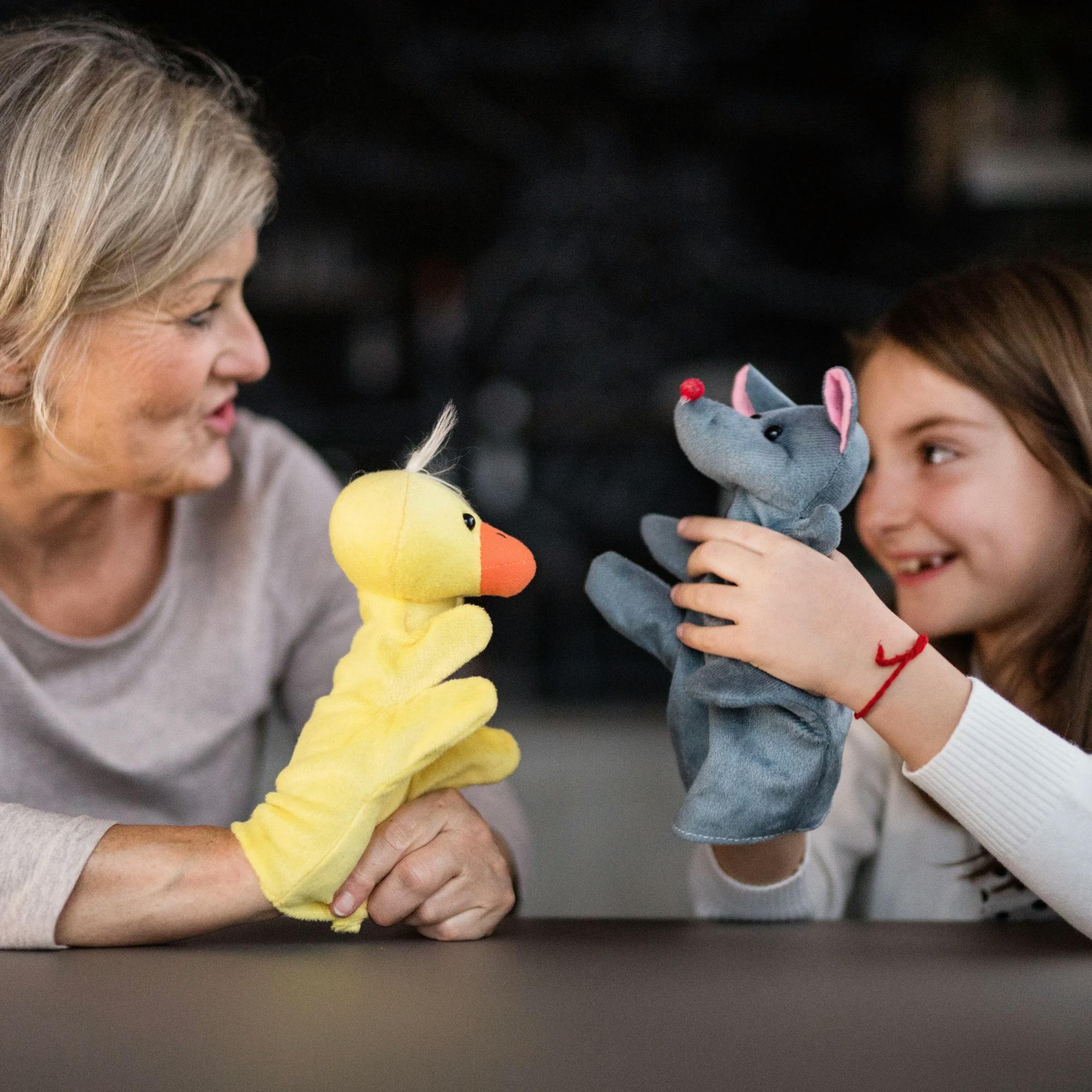
Tips for pronouncing /l/ in words
Now that your child has mastered /l/ productions in isolation, it's time to move on to syllables or words. One thing you can do is have your child hold out the /l/ production at the beginning of the word. For example, the word “light” may be pronounced “llllllight.” This helps the child focus more on the /l/ sound instead of rushing through the word and not having enough time to think about correct tongue placement.
Be sure to continue using the mirror! A mirror provides visual feedback to help your child see if their tongue is in the correct position. They can also see any incorrect lip movements, such as rounded lips for a /w/ sound instead of a /l/. The lips should be spread and “tense,” similar to a smile. This will help a child produce the correct /l/ instead of the /w/ sound.

The importance of routine practice
As with most speech and language goals, noticeable progress doesn't always happen overnight. This applies to practicing the /l/ sound. It generally takes some time to correct these productions--but it's well worth the effort!
Remember: Don’t move too fast through practice. Make sure to spend enough time at each level of complexity before moving on to the next. By following these tips and consistently practicing, your child will be well on their way to becoming a more clear and confident communicator!

Discuss your communication needs with a specialist for free
More from speech sounds.

Watch learning jump (leap! spring! hop!) from your sessions into the real world.

Learn more about All topics

10 Most Common Speech-Language Disorders & Impediments
As you get to know more about the field of speech-language pathology you’ll increasingly realize why SLPs are required to earn at least a master’s degree . This stuff is serious – and there’s nothing easy about it.
In 2016 the National Institute on Deafness and Other Communication Disorders reported that 7.7% of American children have been diagnosed with a speech or swallowing disorder. That comes out to nearly one in 12 children, and gets even bigger if you factor in adults.
Whether rooted in psycho-speech behavioral issues, muscular disorders, or brain damage, nearly all the diagnoses SLPs make fall within just 10 common categories…
Types of Speech Disorders & Impediments
Apraxia of speech (aos).
Apraxia of Speech (AOS) happens when the neural pathway between the brain and a person’s speech function (speech muscles) is lost or obscured. The person knows what they want to say – they can even write what they want to say on paper – however the brain is unable to send the correct messages so that speech muscles can articulate what they want to say, even though the speech muscles themselves work just fine. Many SLPs specialize in the treatment of Apraxia .
There are different levels of severity of AOS, ranging from mostly functional, to speech that is incoherent. And right now we know for certain it can be caused by brain damage, such as in an adult who has a stroke. This is called Acquired AOS.
However the scientific and medical community has been unable to detect brain damage – or even differences – in children who are born with this disorder, making the causes of Childhood AOS somewhat of a mystery. There is often a correlation present, with close family members suffering from learning or communication disorders, suggesting there may be a genetic link.
Mild cases might be harder to diagnose, especially in children where multiple unknown speech disorders may be present. Symptoms of mild forms of AOS are shared by a range of different speech disorders, and include mispronunciation of words and irregularities in tone, rhythm, or emphasis (prosody).
Stuttering – Stammering
Stuttering, also referred to as stammering, is so common that everyone knows what it sounds like and can easily recognize it. Everyone has probably had moments of stuttering at least once in their life. The National Institute on Deafness and Other Communication Disorders estimates that three million Americans stutter, and reports that of the up-to-10-percent of children who do stutter, three-quarters of them will outgrow it. It should not be confused with cluttering.
Most people don’t know that stuttering can also include non-verbal involuntary or semi-voluntary actions like blinking or abdominal tensing (tics). Speech language pathologists are trained to look for all the symptoms of stuttering , especially the non-verbal ones, and that is why an SLP is qualified to make a stuttering diagnosis.
The earliest this fluency disorder can become apparent is when a child is learning to talk. It may also surface later during childhood. Rarely if ever has it developed in adults, although many adults have kept a stutter from childhood.
Stuttering only becomes a problem when it has an impact on daily activities, or when it causes concern to parents or the child suffering from it. In some people, a stutter is triggered by certain events like talking on the phone. When people start to avoid specific activities so as not to trigger their stutter, this is a sure sign that the stutter has reached the level of a speech disorder.
The causes of stuttering are mostly a mystery. There is a correlation with family history indicating a genetic link. Another theory is that a stutter is a form of involuntary or semi-voluntary tic. Most studies of stuttering agree there are many factors involved.
Dysarthria is a symptom of nerve or muscle damage. It manifests itself as slurred speech, slowed speech, limited tongue, jaw, or lip movement, abnormal rhythm and pitch when speaking, changes in voice quality, difficulty articulating, labored speech, and other related symptoms.
It is caused by muscle damage, or nerve damage to the muscles involved in the process of speaking such as the diaphragm, lips, tongue, and vocal chords.
Because it is a symptom of nerve and/or muscle damage it can be caused by a wide range of phenomena that affect people of all ages. This can start during development in the womb or shortly after birth as a result of conditions like muscular dystrophy and cerebral palsy. In adults some of the most common causes of dysarthria are stroke, tumors, and MS.
A lay term, lisping can be recognized by anyone and is very common.
Speech language pathologists provide an extra level of expertise when treating patients with lisping disorders . They can make sure that a lisp is not being confused with another type of disorder such as apraxia, aphasia, impaired development of expressive language, or a speech impediment caused by hearing loss.
SLPs are also important in distinguishing between the five different types of lisps. Most laypersons can usually pick out the most common type, the interdental/dentalised lisp. This is when a speaker makes a “th” sound when trying to make the “s” sound. It is caused by the tongue reaching past or touching the front teeth.
Because lisps are functional speech disorders, SLPs can play a huge role in correcting these with results often being a complete elimination of the lisp. Treatment is particularly effective when implemented early, although adults can also benefit.
Experts recommend professional SLP intervention if a child has reached the age of four and still has an interdental/dentalised lisp. SLP intervention is recommended as soon as possible for all other types of lisps. Treatment includes pronunciation and annunciation coaching, re-teaching how a sound or word is supposed to be pronounced, practice in front of a mirror, and speech-muscle strengthening that can be as simple as drinking out of a straw.
Spasmodic Dysphonia
Spasmodic Dysphonia (SD) is a chronic long-term disorder that affects the voice. It is characterized by a spasming of the vocal chords when a person attempts to speak and results in a voice that can be described as shaky, hoarse, groaning, tight, or jittery. It can cause the emphasis of speech to vary considerably. Many SLPs specialize in the treatment of Spasmodic Dysphonia .
SLPs will most often encounter this disorder in adults, with the first symptoms usually occurring between the ages of 30 and 50. It can be caused by a range of things mostly related to aging, such as nervous system changes and muscle tone disorders.
It’s difficult to isolate vocal chord spasms as being responsible for a shaky or trembly voice, so diagnosing SD is a team effort for SLPs that also involves an ear, nose, and throat doctor (otolaryngologist) and a neurologist.
Have you ever heard people talking about how they are smart but also nervous in large groups of people, and then self-diagnose themselves as having Asperger’s? You might have heard a similar lay diagnosis for cluttering. This is an indication of how common this disorder is as well as how crucial SLPs are in making a proper cluttering diagnosis .
A fluency disorder, cluttering is characterized by a person’s speech being too rapid, too jerky, or both. To qualify as cluttering, the person’s speech must also have excessive amounts of “well,” “um,” “like,” “hmm,” or “so,” (speech disfluencies), an excessive exclusion or collapsing of syllables, or abnormal syllable stresses or rhythms.
The first symptoms of this disorder appear in childhood. Like other fluency disorders, SLPs can have a huge impact on improving or eliminating cluttering. Intervention is most effective early on in life, however adults can also benefit from working with an SLP.
Muteness – Selective Mutism
There are different kinds of mutism, and here we are talking about selective mutism. This used to be called elective mutism to emphasize its difference from disorders that caused mutism through damage to, or irregularities in, the speech process.
Selective mutism is when a person does not speak in some or most situations, however that person is physically capable of speaking. It most often occurs in children, and is commonly exemplified by a child speaking at home but not at school.
Selective mutism is related to psychology. It appears in children who are very shy, who have an anxiety disorder, or who are going through a period of social withdrawal or isolation. These psychological factors have their own origins and should be dealt with through counseling or another type of psychological intervention.
Diagnosing selective mutism involves a team of professionals including SLPs, pediatricians, psychologists, and psychiatrists. SLPs play an important role in this process because there are speech language disorders that can have the same effect as selective muteness – stuttering, aphasia, apraxia of speech, or dysarthria – and it’s important to eliminate these as possibilities.
And just because selective mutism is primarily a psychological phenomenon, that doesn’t mean SLPs can’t do anything. Quite the contrary.
The National Institute on Neurological Disorders and Stroke estimates that one million Americans have some form of aphasia.
Aphasia is a communication disorder caused by damage to the brain’s language capabilities. Aphasia differs from apraxia of speech and dysarthria in that it solely pertains to the brain’s speech and language center.
As such anyone can suffer from aphasia because brain damage can be caused by a number of factors. However SLPs are most likely to encounter aphasia in adults, especially those who have had a stroke. Other common causes of aphasia are brain tumors, traumatic brain injuries, and degenerative brain diseases.
In addition to neurologists, speech language pathologists have an important role in diagnosing aphasia. As an SLP you’ll assess factors such as a person’s reading and writing, functional communication, auditory comprehension, and verbal expression.
Speech Delay – Alalia
A speech delay, known to professionals as alalia, refers to the phenomenon when a child is not making normal attempts to verbally communicate. There can be a number of factors causing this to happen, and that’s why it’s critical for a speech language pathologist to be involved.
The are many potential reasons why a child would not be using age-appropriate communication. These can range anywhere from the child being a “late bloomer” – the child just takes a bit longer than average to speak – to the child having brain damage. It is the role of an SLP to go through a process of elimination, evaluating each possibility that could cause a speech delay, until an explanation is found.
Approaching a child with a speech delay starts by distinguishing among the two main categories an SLP will evaluate: speech and language.
Speech has a lot to do with the organs of speech – the tongue, mouth, and vocal chords – as well as the muscles and nerves that connect them with the brain. Disorders like apraxia of speech and dysarthria are two examples that affect the nerve connections and organs of speech. Other examples in this category could include a cleft palette or even hearing loss.
The other major category SLPs will evaluate is language. This relates more to the brain and can be affected by brain damage or developmental disorders like autism. There are many different types of brain damage that each manifest themselves differently, as well as developmental disorders, and the SLP will make evaluations for everything.
Issues Related to Autism
While the autism spectrum itself isn’t a speech disorder, it makes this list because the two go hand-in-hand more often than not.
The Centers for Disease Control and Prevention (CDC) reports that one out of every 68 children in our country have an autism spectrum disorder. And by definition, all children who have autism also have social communication problems.
Speech-language pathologists are often a critical voice on a team of professionals – also including pediatricians, occupational therapists, neurologists, developmental specialists, and physical therapists – who make an autism spectrum diagnosis .
In fact, the American Speech-Language Hearing Association reports that problems with communication are the first detectable signs of autism. That is why language disorders – specifically disordered verbal and nonverbal communication – are one of the primary diagnostic criteria for autism.
So what kinds of SLP disorders are you likely to encounter with someone on the autism spectrum?
A big one is apraxia of speech. A study that came out of Penn State in 2015 found that 64 percent of children who were diagnosed with autism also had childhood apraxia of speech.
This basic primer on the most common speech disorders offers little more than an interesting glimpse into the kind of issues that SLPs work with patients to resolve. But even knowing everything there is to know about communication science and speech disorders doesn’t tell the whole story of what this profession is all about. With every client in every therapy session, the goal is always to have the folks that come to you for help leave with a little more confidence than when they walked in the door that day. As a trusted SLP, you will build on those gains with every session, helping clients experience the joy and freedom that comes with the ability to express themselves freely. At the end of the day, this is what being an SLP is all about.
Ready to make a difference in speech pathology? Learn how to become a Speech-Language Pathologist today
- Emerson College - Master's in Speech-Language Pathology online - Prepare to become an SLP in as few as 20 months. No GRE required. Scholarships available.
- Arizona State University - Online - Online Bachelor of Science in Speech and Hearing Science - Designed to prepare graduates to work in behavioral health settings or transition to graduate programs in speech-language pathology and audiology.
- NYU Steinhardt - NYU Steinhardt's Master of Science in Communicative Sciences and Disorders online - ASHA-accredited. Bachelor's degree required. Graduate prepared to pursue licensure.
- Calvin University - Calvin University's Online Speech and Hearing Foundations Certificate - Helps You Gain a Strong Foundation for Your Speech-Language Pathology Career.
- Second Opinion
Speech Sound Disorders in Children
What are speech sound disorders in children?
It’s normal for young children learning language skills to have some trouble saying words the right way. That’s part of the learning process. Their speech skills develop over time. They master certain sounds and words at each age. By age 8, most children have learned how to master all word sounds.
But some children have speech sound disorders. This means they have trouble saying certain sounds and words past the expected age. This can make it hard to understand what a child is trying to say.
Speech sound problems include articulation disorder and phonological process disorder.
Articulation disorder is a problem with making certain sounds, such as “sh.”
Phonological process disorder is a pattern of sound mistakes. This includes not pronouncing certain letters.
What causes speech sound disorders in a child?
Often, a speech sound disorder has no known cause. But some speech sound errors may be caused by:
Injury to the brain
Thinking or development disability
Problems with hearing or hearing loss, such as past ear infections
Physical problems that affect speech, such cleft palate or cleft lip
Disorders affecting the nerves involved in speech
Which children are at risk for speech sound disorders?
The cause often is not known, but children at risk for a speech sound disorder include those with:
Developmental disorders such as autism
Genetic disorders such as Down syndrome
Hearing loss
Nervous system disorders such as cerebral palsy
Illnesses such as frequent ear infections
Physical problems such as a cleft lip or palate
Too much thumb-sucking or pacifier use
Low education level of the parent
Lack of support for learning in the home
What are the symptoms of speech sound disorders in a child?
Your child’s symptoms depend on what type of speech sound disorder your child has. He or she may have trouble forming some word sounds correctly past a certain age. This is called articulation disorder. Your child may drop, add, distort, or swap word sounds. Keep in mind that some sound changes may be part of an accent. They are not speech errors. Signs of this problem can include:
Leaving off sounds from words (example: saying “coo” instead of “school”)
Adding sounds to words (example: saying “puhlay” instead of “play”)
Distorting sounds in words (example: saying “thith” instead of “this”)
Swapping sounds in words (example: saying “wadio” instead of “radio”)
If your child often makes certain word speech mistakes, he or she may have phonological process disorder. The mistakes may be common in young children learning speech skills. But when they last past a certain age, it may be a disorder. Signs of this problem are:
Saying only 1 syllable in a word (example: “bay” instead of “baby”)
Simplifying a word by repeating 2 syllables (example: “baba” instead of “bottle”)
Leaving out a consonant sound (example: “at” or “ba” instead of “bat”)
Changing certain consonant sounds (example: “tat” instead of “cat”)
How are speech sound disorders diagnosed in a child?
First, your child’s healthcare provider will check his or her hearing. This is to make sure that your child isn’t simply hearing words and sounds incorrectly.
If your child’s healthcare provider rules out hearing loss, you may want to talk with a speech-language pathologist. This is a speech expert who evaluates and treats children who are having problems with speech-language and communication.
By watching and listening to your child speak, a speech-language pathologist can determine whether your child has a speech sound disorder. The pathologist will evaluate your child’s speech and language skills. He or she will keep in mind accents and dialect. He or she can also find out if a physical problem in the mouth is affecting your child’s ability to speak. Finding the problem and getting help early are important to treat speech sound disorders.
How are speech sound disorders treated in a child?
The speech-language pathologist can put together a therapy plan to help your child with his or her disorder. These healthcare providers work with children to help them:
Notice and fix sounds that they are making wrong
Learn how to correctly form their problem sound
Practice saying certain words and making certain sounds
The pathologist can also give you activities and strategies to help your child practice at home. If your child has a physical problem in the mouth, the pathologist can refer your child to an ear, nose, throat healthcare provider or orthodontist if needed.
Spotting a speech sound disorder early can help your child overcome any speech problems. He or she can learn how to speak well and comfortably.
How can I help my child live with a speech sound disorder?
You can do things to take care of your child with a speech sound disorder:
Keep all appointments with your child’s healthcare provider.
Talk with your healthcare provider about other providers who will be involved in your child’s care. Your child may get care from a team that may include experts such as speech-language pathologists and counselors. Your child’s care team will depend on your child’s needs and the severity of the speech sound disorder.
Tell others of your child’s disorder. Work with your child’s healthcare provider and schools to develop a treatment plan.
Reach out for support from local community services. Being in touch with other parents who have a child with a speech sound disorder may be helpful.

When should I call my child’s healthcare provider?
Call your child’s healthcare provider if your child has:
Symptoms that don’t get better, or get worse
New symptoms
Key points about speech sound disorders in children
A speech sound disorder means a child has trouble saying certain sounds and words past the expected age.
A child with an articulation disorder has problems making certain sounds the right way.
A child with phonological process disorder regularly makes certain word speech mistakes.
The cause of this problem is often unknown.
A speech-language pathologist can help diagnose and treat a speech sound disorder.
Tips to help you get the most from a visit to your child’s healthcare provider:
Know the reason for the visit and what you want to happen.
Before your visit, write down questions you want answered.
At the visit, write down the name of a new diagnosis, and any new medicines, treatments, or tests. Also write down any new instructions your provider gives you for your child.
Know why a new medicine or treatment is prescribed and how it will help your child. Also know what the side effects are.
Ask if your child’s condition can be treated in other ways.
Know why a test or procedure is recommended and what the results could mean.
Know what to expect if your child does not take the medicine or have the test or procedure.
If your child has a follow-up appointment, write down the date, time, and purpose for that visit.
Know how you can contact your child’s provider after office hours. This is important if your child becomes ill and you have questions or need advice.
Fluency Disorder
- Age-Appropriate Speech and Language Milestones
- Communication Disorders in Children
Related Topics
Connect with us:
Download our App:
- Leadership Team
- Vision, Mission & Values
- The Stanford Advantage
- Government and Community Relations
- Get Involved
- Volunteer Services
- Auxiliaries & Affiliates
© 123 Stanford Medicine Children’s Health

- Bachelor’s Degrees
- Master’s Degrees
- Doctorate Degrees
- Certificate Programs
- Nursing Degrees
- Cybersecurity
- Human Services
- Science & Mathematics
- Communication
- Liberal Arts
- Social Sciences
- Computer Science
- Admissions Overview
- Tuition and Financial Aid
- Incoming Freshman and Graduate Students
- Transfer Students
- Military Students
- International Students
- Early Access Program
- About Maryville
- Our Faculty
- Our Approach
- Our History
- Accreditation
- Tales of the Brave
- Student Support Overview
- Online Learning Tools
- Infographics
Home / Blog
Speech Impediment Guide: Definition, Causes, and Resources
December 8, 2020
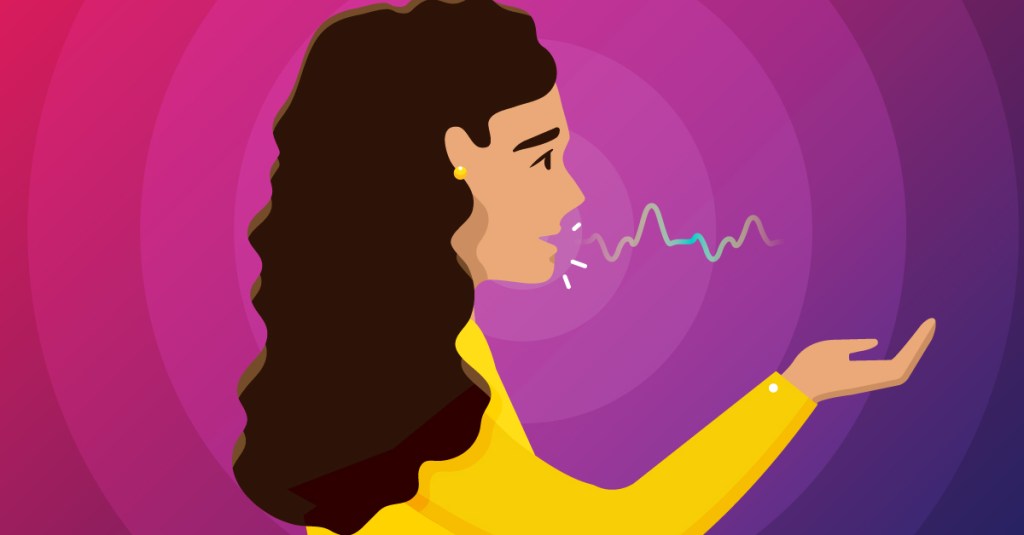
Tables of Contents
What Is a Speech Impediment?
Types of speech disorders, speech impediment causes, how to fix a speech impediment, making a difference in speech disorders.
Communication is a cornerstone of human relationships. When an individual struggles to verbalize information, thoughts, and feelings, it can cause major barriers in personal, learning, and business interactions.
Speech impediments, or speech disorders, can lead to feelings of insecurity and frustration. They can also cause worry for family members and friends who don’t know how to help their loved ones express themselves.
Fortunately, there are a number of ways that speech disorders can be treated, and in many cases, cured. Health professionals in fields including speech-language pathology and audiology can work with patients to overcome communication disorders, and individuals and families can learn techniques to help.
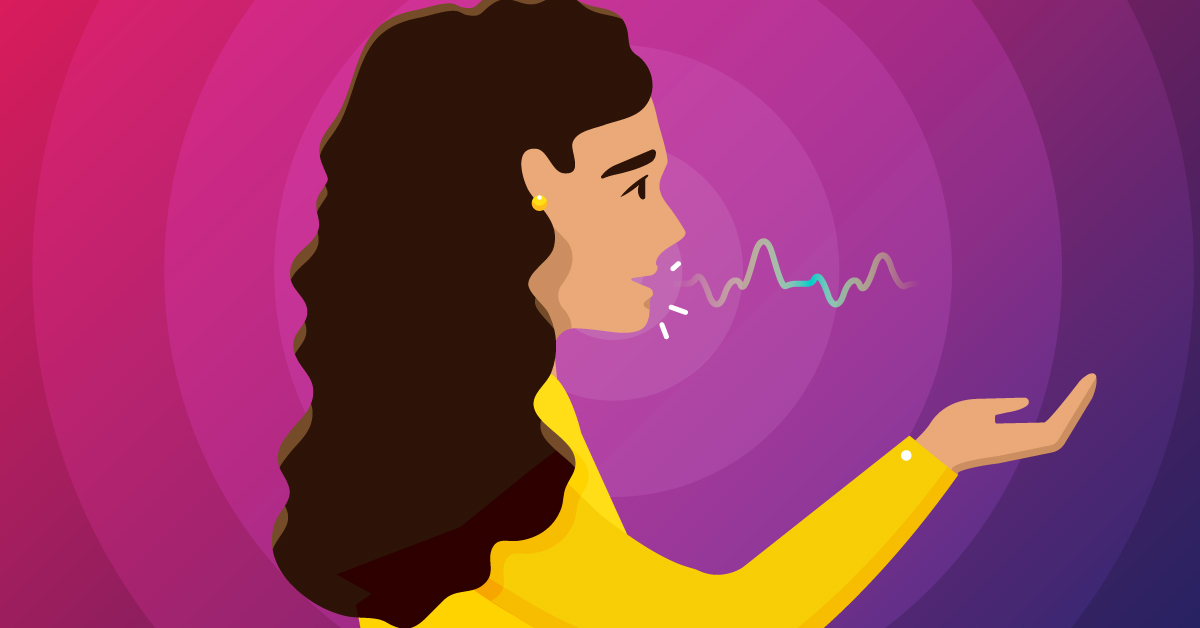
Commonly referred to as a speech disorder, a speech impediment is a condition that impacts an individual’s ability to speak fluently, correctly, or with clear resonance or tone. Individuals with speech disorders have problems creating understandable sounds or forming words, leading to communication difficulties.
Some 7.7% of U.S. children — or 1 in 12 youths between the ages of 3 and 17 — have speech, voice, language, or swallowing disorders, according to the National Institute on Deafness and Other Communication Disorders (NIDCD). About 70 million people worldwide, including some 3 million Americans, experience stuttering difficulties, according to the Stuttering Foundation.
Common signs of a speech disorder
There are several symptoms and indicators that can point to a speech disorder.
- Unintelligible speech — A speech disorder may be present when others have difficulty understanding a person’s verbalizations.
- Omitted sounds — This symptom can include the omission of part of a word, such as saying “bo” instead of “boat,” and may include omission of consonants or syllables.
- Added sounds — This can involve adding extra sounds in a word, such as “buhlack” instead of “black,” or repeating sounds like “b-b-b-ball.”
- Substituted sounds — When sounds are substituted or distorted, such as saying “wabbit” instead of “rabbit,” it may indicate a speech disorder.
- Use of gestures — When individuals use gestures to communicate instead of words, a speech impediment may be the cause.
- Inappropriate pitch — This symptom is characterized by speaking with a strange pitch or volume.
In children, signs might also include a lack of babbling or making limited sounds. Symptoms may also include the incorrect use of specific sounds in words, according to the American Speech-Language-Hearing Association (ASHA). This may include the sounds p, m, b, w, and h among children aged 1-2, and k, f, g, d, n, and t for children aged 2-3.
Back To Top
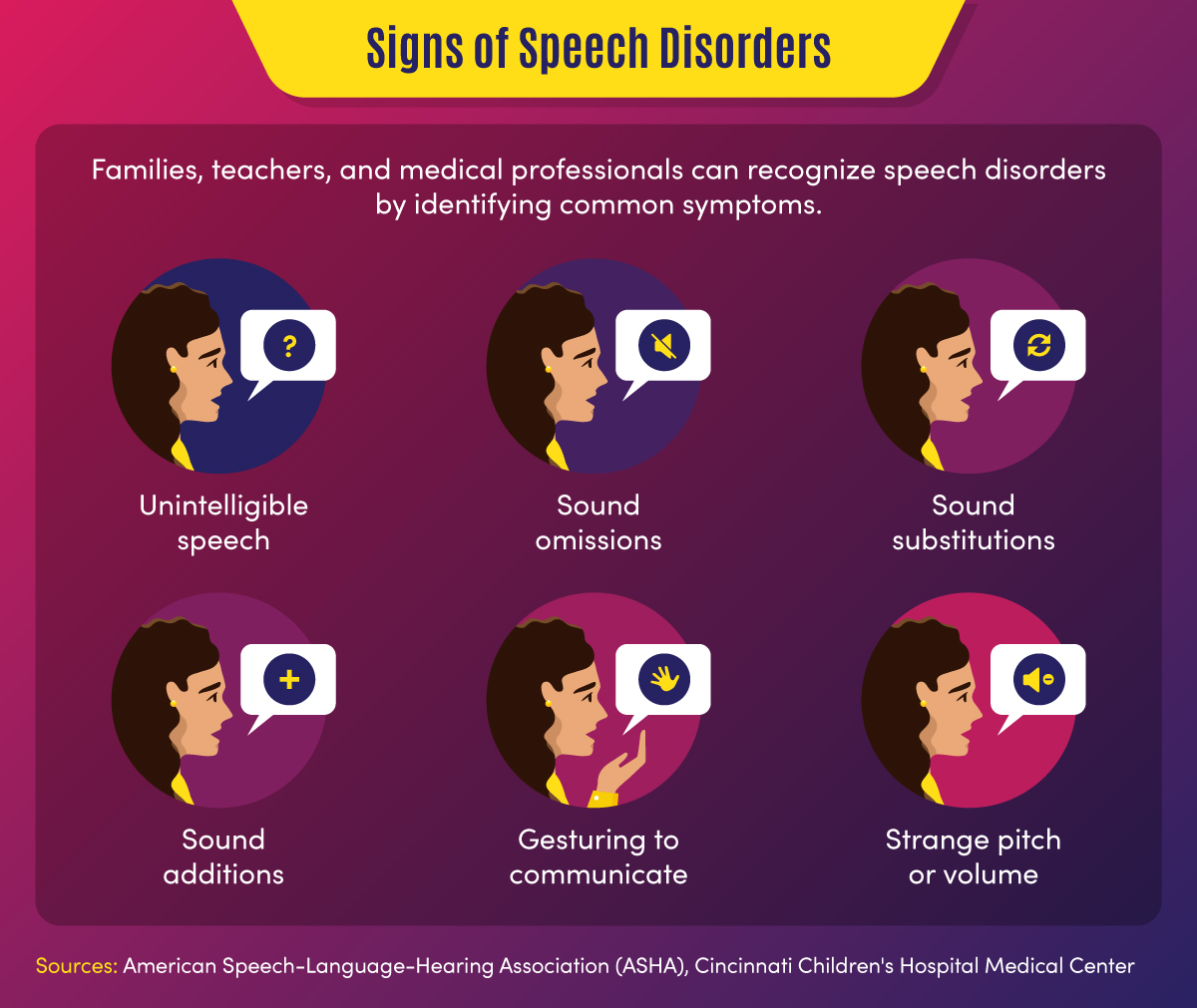
Categories of Speech Impediments
Speech impediments can range from speech sound disorders (articulation and phonological disorders) to voice disorders. Speech sound disorders may be organic — resulting from a motor or sensory cause — or may be functional with no known cause. Voice disorders deal with physical problems that limit speech. The main categories of speech impediments include the following:
Fluency disorders occur when a patient has trouble with speech timing or rhythms. This can lead to hesitations, repetitions, or prolonged sounds. Fluency disorders include stuttering (repetition of sounds) or (rapid or irregular rate of speech).
Resonance disorders are related to voice quality that is impacted by the shape of the nose, throat, and/or mouth. Examples of resonance disorders include hyponasality and cul-de-sac resonance.
Articulation disorders occur when a patient has difficulty producing speech sounds. These disorders may stem from physical or anatomical limitations such as muscular, neuromuscular, or skeletal support. Examples of articulation speech impairments include sound omissions, substitutions, and distortions.
Phonological disorders result in the misuse of certain speech sounds to form words. Conditions include fronting, stopping, and the omission of final consonants.
Voice disorders are the result of problems in the larynx that harm the quality or use of an individual’s voice. This can impact pitch, resonance, and loudness.
Impact of Speech Disorders
Some speech disorders have little impact on socialization and daily activities, but other conditions can make some tasks difficult for individuals. Following are a few of the impacts of speech impediments.
- Poor communication — Children may be unable to participate in certain learning activities, such as answering questions or reading out loud, due to communication difficulties. Adults may avoid work or social activities such as giving speeches or attending parties.
- Mental health and confidence — Speech disorders may cause children or adults to feel different from peers, leading to a lack of self-confidence and, potentially, self-isolation.
Resources on Speech Disorders
The following resources may help those who are seeking more information about speech impediments.
Health Information : Information and statistics on common voice and speech disorders from the NIDCD
Speech Disorders : Information on childhood speech disorders from Cincinnati Children’s Hospital Medical Center
Speech, Language, and Swallowing : Resources about speech and language development from the ASHA
Children and adults can suffer from a variety of speech impairments that may have mild to severe impacts on their ability to communicate. The following 10 conditions are examples of specific types of speech disorders and voice disorders.
1. Stuttering
This condition is one of the most common speech disorders. Stuttering is the repetition of syllables or words, interruptions in speech, or prolonged use of a sound.
This organic speech disorder is a result of damage to the neural pathways that connect the brain to speech-producing muscles. This results in a person knowing what they want to say, but being unable to speak the words.
This consists of the lost ability to speak, understand, or write languages. It is common in stroke, brain tumor, or traumatic brain injury patients.
4. Dysarthria
This condition is an organic speech sound disorder that involves difficulty expressing certain noises. This may involve slurring, or poor pronunciation, and rhythm differences related to nerve or brain disorders.
The condition of lisping is the replacing of sounds in words, including “th” for “s.” Lisping is a functional speech impediment.
6. Hyponasality
This condition is a resonance disorder related to limited sound coming through the nose, causing a “stopped up” quality to speech.
7. Cul-de-sac resonance
This speech disorder is the result of blockage in the mouth, throat, or nose that results in quiet or muffled speech.
8. Orofacial myofunctional disorders
These conditions involve abnormal patterns of mouth and face movement. Conditions include tongue thrusting (fronting), where individuals push out their tongue while eating or talking.
9. Spasmodic Dysphonia
This condition is a voice disorder in which spasms in the vocal cords produce speech that is hoarse, strained, or jittery.
10. Other voice disorders
These conditions can include having a voice that sounds breathy, hoarse, or scratchy. Some disorders deal with vocal folds closing when they should open (paradoxical vocal fold movement) or the presence of polyps or nodules in the vocal folds.
Speech Disorders vs. Language Disorders
Speech disorders deal with difficulty in creating sounds due to articulation, fluency, phonology, and voice problems. These problems are typically related to physical, motor, sensory, neurological, or mental health issues.
Language disorders, on the other hand, occur when individuals have difficulty communicating the meaning of what they want to express. Common in children, these disorders may result in low vocabulary and difficulty saying complex sentences. Such a disorder may reflect difficulty in comprehending school lessons or adopting new words, or it may be related to a learning disability such as dyslexia. Language disorders can also involve receptive language difficulties, where individuals have trouble understanding the messages that others are trying to convey.
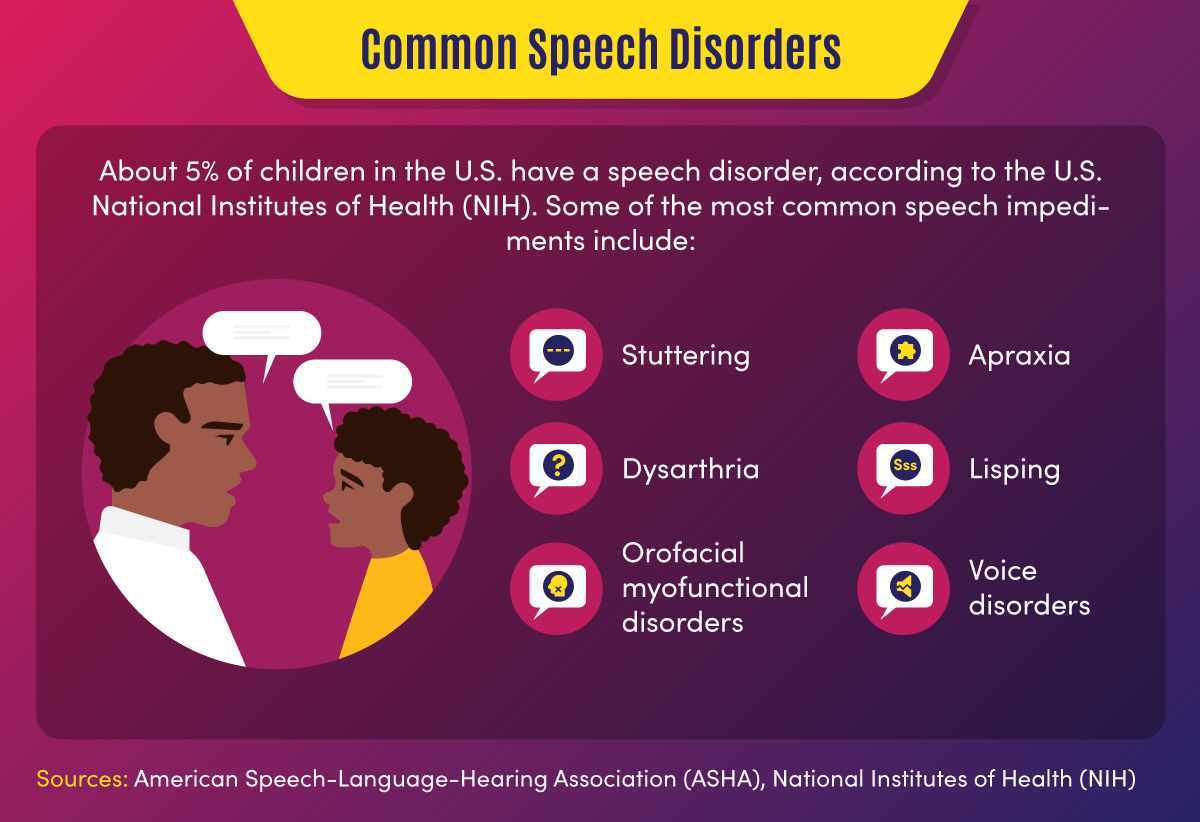
Resources on Types of Speech Disorders
The following resources may provide additional information on the types of speech impediments.
Common Speech Disorders: A guide to the most common speech impediments from GreatSpeech
Speech impairment in adults: Descriptions of common adult speech issues from MedlinePlus
Stuttering Facts: Information on stuttering indications and causes from the Stuttering Foundation
Speech disorders may be caused by a variety of factors related to physical features, neurological ailments, or mental health conditions. In children, they may be related to developmental issues or unknown causes and may go away naturally over time.
Physical and neurological issues. Speech impediment causes related to physical characteristics may include:
- Brain damage
- Nervous system damage
- Respiratory system damage
- Hearing difficulties
- Cancerous or noncancerous growths
- Muscle and bone problems such as dental issues or cleft palate
Mental health issues. Some speech disorders are related to clinical conditions such as:
- Autism spectrum disorder
- Down syndrome or other genetic syndromes
- Cerebral palsy or other neurological disorders
- Multiple sclerosis
Some speech impairments may also have to do with family history, such as when parents or siblings have experienced language or speech difficulties. Other causes may include premature birth, pregnancy complications, or delivery difficulties. Voice overuse and chronic coughs can also cause speech issues.
The most common way that speech disorders are treated involves seeking professional help. If patients and families feel that symptoms warrant therapy, health professionals can help determine how to fix a speech impediment. Early treatment is best to curb speech disorders, but impairments can also be treated later in life.
Professionals in the speech therapy field include speech-language pathologists (SLPs) . These practitioners assess, diagnose, and treat communication disorders including speech, language, social, cognitive, and swallowing disorders in both adults and children. They may have an SLP assistant to help with diagnostic and therapy activities.
Speech-language pathologists may also share a practice with audiologists and audiology assistants. Audiologists help identify and treat hearing, balance, and other auditory disorders.
How Are Speech Disorders Diagnosed?
Typically, a pediatrician, social worker, teacher, or other concerned party will recognize the symptoms of a speech disorder in children. These individuals, who frequently deal with speech and language conditions and are more familiar with symptoms, will recommend that parents have their child evaluated. Adults who struggle with speech problems may seek direct guidance from a physician or speech evaluation specialist.
When evaluating a patient for a potential speech impediment, a physician will:
- Conduct hearing and vision tests
- Evaluate patient records
- Observe patient symptoms
A speech-language pathologist will conduct an initial screening that might include:
- An evaluation of speech sounds in words and sentences
- An evaluation of oral motor function
- An orofacial examination
- An assessment of language comprehension
The initial screening might result in no action if speech symptoms are determined to be developmentally appropriate. If a disorder is suspected, the initial screening might result in a referral for a comprehensive speech sound assessment, comprehensive language assessment, audiology evaluation, or other medical services.
Initial assessments and more in-depth screenings might occur in a private speech therapy practice, rehabilitation center, school, childcare program, or early intervention center. For older adults, skilled nursing centers and nursing homes may assess patients for speech, hearing, and language disorders.
How Are Speech Impediments Treated?
Once an evaluation determines precisely what type of speech sound disorder is present, patients can begin treatment. Speech-language pathologists use a combination of therapy, exercise, and assistive devices to treat speech disorders.
Speech therapy might focus on motor production (articulation) or linguistic (phonological or language-based) elements of speech, according to ASHA. There are various types of speech therapy available to patients.
Contextual Utilization — This therapeutic approach teaches methods for producing sounds consistently in different syllable-based contexts, such as phonemic or phonetic contexts. These methods are helpful for patients who produce sounds inconsistently.
Phonological Contrast — This approach focuses on improving speech through emphasis of phonemic contrasts that serve to differentiate words. Examples might include minimal opposition words (pot vs. spot) or maximal oppositions (mall vs. call). These therapy methods can help patients who use phonological error patterns.
Distinctive Feature — In this category of therapy, SLPs focus on elements that are missing in speech, such as articulation or nasality. This helps patients who substitute sounds by teaching them to distinguish target sounds from substituted sounds.
Core Vocabulary — This therapeutic approach involves practicing whole words that are commonly used in a specific patient’s communications. It is effective for patients with inconsistent sound production.
Metaphon — In this type of therapy, patients are taught to identify phonological language structures. The technique focuses on contrasting sound elements, such as loud vs. quiet, and helps patients with unintelligible speech issues.
Oral-Motor — This approach uses non-speech exercises to supplement sound therapies. This helps patients gain oral-motor strength and control to improve articulation.
Other methods professionals may use to help fix speech impediments include relaxation, breathing, muscle strengthening, and voice exercises. They may also recommend assistive devices, which may include:
- Radio transmission systems
- Personal amplifiers
- Picture boards
- Touch screens
- Text displays
- Speech-generating devices
- Hearing aids
- Cochlear implants
Resources for Professionals on How to Fix a Speech Impediment
The following resources provide information for speech therapists and other health professionals.
Assistive Devices: Information on hearing and speech aids from the NIDCD
Information for Audiologists: Publications, news, and practice aids for audiologists from ASHA
Information for Speech-Language Pathologists: Publications, news, and practice aids for SLPs from ASHA
Speech Disorder Tips for Families
For parents who are concerned that their child might have a speech disorder — or who want to prevent the development of a disorder — there are a number of activities that can help. The following are tasks that parents can engage in on a regular basis to develop literacy and speech skills.
- Introducing new vocabulary words
- Reading picture and story books with various sounds and patterns
- Talking to children about objects and events
- Answering children’s questions during routine activities
- Encouraging drawing and scribbling
- Pointing to words while reading books
- Pointing out words and sentences in objects and signs
Parents can take the following steps to make sure that potential speech impediments are identified early on.
- Discussing concerns with physicians
- Asking for hearing, vision, and speech screenings from doctors
- Requesting special education assessments from school officials
- Requesting a referral to a speech-language pathologist, audiologist, or other specialist
When a child is engaged in speech therapy, speech-language pathologists will typically establish collaborative relationships with families, sharing information and encouraging parents to participate in therapy decisions and practices.
SLPs will work with patients and their families to set goals for therapy outcomes. In addition to therapy sessions, they may develop activities and exercises for families to work on at home. It is important that caregivers are encouraging and patient with children during therapy.
Resources for Parents on How to Fix a Speech Impediment
The following resources provide additional information on treatment options for speech disorders.
Speech, Language, and Swallowing Disorders Groups: Listing of self-help groups from ASHA
ProFind: Search tool for finding certified SLPs and audiologists from ASHA
Baby’s Hearing and Communication Development Checklist: Listing of milestones that children should meet by certain ages from the NIDCD
If identified during childhood, speech disorders can be corrected efficiently, giving children greater communication opportunities. If left untreated, speech impediments can cause a variety of problems in adulthood, and may be more difficult to diagnose and treat.
Parents, teachers, doctors, speech and language professionals, and other concerned parties all have unique responsibilities in recognizing and treating speech disorders. Through professional therapy, family engagement, positive encouragement and a strong support network, individuals with speech impediments can overcome their challenges and develop essential communication skills.
Additional Sources
American Speech-Language-Hearing Association, Speech Sound Disorders
Identify the Signs, Signs of Speech and Language Disorders
Intermountain Healthcare, Phonological Disorders
MedlinePlus, Speech disorders – children
National Institutes of Health, National Institutes on Deafness and Other Communication Disorders, “Quick Statistics About Voice, Speech, Language”
Bring us your ambition and we’ll guide you along a personalized path to a quality education that’s designed to change your life.
Take Your Next Brave Step
Receive information about the benefits of our programs, the courses you'll take, and what you need to apply.
- Bipolar Disorder
- Therapy Center
- When To See a Therapist
- Types of Therapy
- Best Online Therapy
- Best Couples Therapy
- Managing Stress
- Sleep and Dreaming
- Understanding Emotions
- Self-Improvement
- Healthy Relationships
- Student Resources
- Personality Types
- Sweepstakes
- Guided Meditations
- Verywell Mind Insights
- 2024 Verywell Mind 25
- Mental Health in the Classroom
- Editorial Process
- Meet Our Review Board
- Crisis Support
What Is a Speech Sound Disorder?
Halfpoint Images / Getty Images
Speech sound disorders are a blanket description for a child’s difficulty in learning, articulating, or using the sounds/sound patterns of their language. These difficulties are usually clear when compared to the communication abilities of children within the same age group.
Speech developmental disorders may indicate challenges with motor speech. Here, a child experiences difficulty moving the muscles necessary for speech production. This child may also face reduced coordination when attempting to speak.
Speech sound disorders are recognized where speech patterns do not correspond with the movements/gestures made when speaking.
Speech impairments are a common early childhood occurrence—an estimated 2% to 13% of children live with these difficulties. Children with these disorders may struggle with reading and writing. This can interfere with their expected academic performance. Speech sound disorders are often confused with language conditions such as specific language impairment (SLI).
This article will examine the distinguishing features of this disorder. It will also review factors responsible for speech challenges, and the different ways they can manifest. Lastly, we’ll cover different treatment methods that make managing this disorder possible.
Symptoms of Speech Sound Disorder
A speech sound disorder may manifest in different ways. This usually depends on the factors responsible for the challenge, or how extreme it is.
There are different patterns of error that may signal a speech sound disorder. These include:
- Removing a sound from a word
- Including a sound in a word
- Replacing hard to pronounce sounds with an unsuitable alternative
- Difficulty pronouncing the same sound in different words (e.g., "pig" and "kit")
- Repeating sounds or words
- Lengthening words
- Pauses while speaking
- Tension when producing sounds
- Head jerks during speech
- Blinking while speaking
- Shame while speaking
- Changes in voice pitch
- Running out of breath while speaking
It’s important to note that children develop at different rates. This can reflect in the ease and ability to produce sounds. But where children repeatedly make sounds or statements that are difficult to understand, this could indicate a speech disorder.
Diagnosis of Speech Sound Disorders
For a correct diagnosis, a speech-language pathologist can determine whether or not a child has a speech-sound disorder.
This determination may be made in line with the requirements of the DSM-5 diagnostic criteria . These guidelines require that:
- The child experience persistent difficulty with sound production (this affects communication and speech comprehension)
- Symptoms of the disorder appear early during the child’s development stages
- This disorder limits communication. It affects social interactions, academic achievements, and job performance.
- The disorder is not caused by other conditions like a congenital disorder or an acquired condition like hearing loss . Hereditary disorders are, however, exempted.
Causes of Speech Sound Disorders
There is no known cause of speech sound disorders. However, several risk factors may increase the odds of developing a speech challenge. These include:
- Gender : Male children are more likely to develop a speech sound disorder
- Family history : Children with family members living with speech disorders may acquire a similar challenge.
- Socioeconomics : Being raised in a low socioeconomic environment may contribute to the development of speech and literacy challenges.
- Pre- and post-natal challenges : Difficulties faced during pregnancy such as maternal infections and stressors may worsen the chances of speech disorders in a child. Likewise, delivery complications, premature birth, and low-birth-weight could lead to speech disorders.
- Disabilities : Down syndrome, autism , and other disabilities may be linked to speech-sound disorders.
- Physical challenges : Children with a cleft lip may experience speech sound difficulties.
- Brain damage : These disorders may also be caused by an infection or trauma to a child’s brain . This is seen in conditions like cerebral palsy where the muscles affecting speech are injured.
Types of Speech Sound Disorders
By the time a child turns three, at least half of what they say should be properly understood. By ages four and five, most sounds should be pronounced correctly—although, exceptions may arise when pronouncing “l”, “s”,”r”,”v”, and other similar sounds. By seven or eight, harder sounds should be properly pronounced.
A child with a speech sound disorder will continue to struggle to pronounce words, even past the expected age. Difficulty with speech patterns may signal one of the following speech sound disorders:
This refers to interruptions while speaking. Stuttering is the most common form of disfluency. It is recognized for recurring breaks in the free flow of speech. After the age of four, a child with disfluency will still repeat words or phrases while speaking. This child may include extra words or sounds when communicating—they may also make words longer by stressing syllables.
This disorder may cause tension while speaking. Other times, head jerking or blinking may be observed with disfluency.
Children with this disorder often feel frustrated when speaking, it may also cause embarrassment during interactions.
Articulation Disorder
When a child is unable to properly produce sounds, this may be caused by inexact placement, speed, pressure, or movement from the lips, tongue, or throat.
This usually signals an articulation disorder, where sounds like “r”, “l”, or “s” may be changed. In these cases, a child’s communication may be understood by only close family members.
Phonological Disorder
A phonological disorder is present where a child is unable to make the speech sounds expected of their age. Here, mistakes may be made when producing sounds. Other times, sounds like consonants may be omitted when speaking.
Voice Disorder
Where a child is observed to have a raspy voice, this may be an early sign of a voice disorder. Other indicators include voice breaks, a change in pitch, or an excessively loud or soft voice.
Children that run out of breath while speaking may also live with this disorder. Likewise, children may sound very nasally, or can appear to have inadequate air coming out of their nose if they have a voice disorder.
Childhood apraxia of speech occurs when a child lacks the proper motor skills for sound production. Children with this condition will find it difficult to plan and produce movements in the tongue, lips, jaw, and palate required for speech.
Treatment of Speech Sound Disorder
Parents of children with speech sound disorders may feel at a loss for the next steps to take. To avoid further strain to the child, it’s important to avoid showing excessive concern.
Instead, listening patiently to their needs, letting them speak without completing their sentences, and showing usual love and care can go a long way.
For professional assistance, a speech-language pathologist can assist with improving a child’s communication. These pathologists will typically use oral motor exercises to enhance speech.
These oral exercises may also include nonspeech oral exercises such as blowing, oral massages and brushing, cheek puffing, whistleblowing, etc.
Nonspeech oral exercises help to strengthen weak mouth muscles, and can help with learning the common ways of communicating.
Parents and children with speech sound disorders may also join support groups for information and assistance with the condition.
A Word From Verywell
It can be frustrating to witness the challenges in communication. But while it's understandable to long for typical communication from a child—the differences caused by speech disorders can be managed with the right care and supervision. Speaking to a speech therapist, and showing love o children with speech disorders can be important first steps in overcoming these conditions.
Eadie P, Morgan A, Ukoumunne OC, Ttofari Eecen K, Wake M, Reilly S. Speech sound disorder at 4 years: prevalence, comorbidities, and predictors in a community cohort of children . Dev Med Child Neurol . 2015;57(6):578-584. doi:10.1111/dmcn.12635
McLeod S, Harrison LJ, McAllister L, McCormack J. Speech sound disorders in a community study of preschool children . Am J Speech Lang Pathol . 2013;22(3):503-522. doi:10.1044/1058-0360(2012/11-0123)
Murphy CF, Pagan-Neves LO, Wertzner HF, Schochat E. Children with speech sound disorder: comparing a non-linguistic auditory approach with a phonological intervention approach to improve phonological skills . Front Psychol . 2015;6:64. Published 2015 Feb 4. doi:10.3389/fpsyg.2015.00064
Penn Medicine. Speech and Language Disorders-Symptoms and Causes .
PsychDB. Speech Sound Disorder (Phonological Disorder) .
Sices L, Taylor HG, Freebairn L, Hansen A, Lewis B. Relationship between speech-sound disorders and early literacy skills in preschool-age children: impact of comorbid language impairment . J Dev Behav Pediatr . 2007;28(6):438-447. doi:10.1097/DBP.0b013e31811ff8ca
American Speech-Language-Hearing Association. Speech Sound Disorders: Articulation and Phonology .
American Speech-Language-Hearing Association. Speech Sound Disorders .
MedlinePlus. Phonological Disorder .
National Institute on Deafness and Other Communication Disorders. Articulation Disorder .
National Institute of Health. Phonological Disorder.
Lee AS, Gibbon FE. Non-speech oral motor treatment for children with developmental speech sound disorders . Cochrane Database Syst Rev . 2015;2015(3):CD009383. Published 2015 Mar 25. doi:10.1002/14651858.CD009383.pub2
By Elizabeth Plumptre Elizabeth is a freelance health and wellness writer. She helps brands craft factual, yet relatable content that resonates with diverse audiences.
Speech Blubs
by Blub Blub
Browse topics
All blog posts 405
Popular topics
100+ fun activities for kids that will keep them entertained for hours! Target speech development through play and games. They won’t even know they are learning!
Learn about your baby and toddler developmental milestones! Check if you are on track, when to worry, and how to work on skills like language, potty training, and feeding!
Every child is different! Here are speech and language tips and tools for kids with learning differences, alongside information for parents provided by speech therapists.
Parenting starts with your well-being! Here is some advice on how to teach life skills, work from home, distance learning, along with tips for developing parenting coping skills.
We help kids speak no matter their speech challenges! Speech therapists advise parents about late talkers, speech delay, stuttering, apraxia, articulation, and other speech impediments.
From your first worry to your first appointment, and your last speech therapy session – find the information you need to help your child thrive and gain necessary speech skills.
Parent's Academy › Speech Disorders › Speech Impediments › 6 Types of Speech Impediments
6 Types of Speech Impediments
Stacie bennett.
Speech-Language Pathologist , Trenton , New Jersey
Jan 28, 2022 ‘Speech and language impediment’ is a very broad term that refers to a communication disorder in an individual that has depressed social, language, communication, hearing, or fluency skills.
In This Article
Speech therapy exercises with speech blubs, apraxia of speech, speech sound disorder, specific language impairment, language-based learning disabilities, key takeaways about speech impediments.
A speech impediment relates to the way an individual produces or articulates specific sounds. One example of this is stuttering. Under the umbrella of a speech impairment lies several different types of disorders with which a child or adult can be diagnosed.
A language impairment involves understanding and sharing thoughts and ideas. For example, this person may not have adequate or “age-appropriate” vocabulary and grammar skills. Again, there are several different language disorders that fall under this category that will be addressed in this blog.
Speech Blubs is a language therapy app with a vast library of more than 1,500 activities, face filters, voice-activated activities, and educational bonus videos.
The more you practice, the more it carries over! Try the Speech Blubs app for fun and engaging therapy sessions with your little one.
Boost Your Child’s Speech Development!
Improve language & communication skills with fun learning!

3 Types of Speech Disorders
Apraxia of speech is a neurogenic (starts in the nervous system) communication disorder that involves the planning system for speech.
Individuals with Apraxia know what they want to say, but there is a disconnect in the part of the brain that tells a specific muscle to move. When someone is diagnosed with apraxia of speech , they may have signs of groping, which is where the mouth searches for the position to create the sound.
When this occurs, it affects how long or short the sounds are, and could lead to odd pitch or volume issues and to sounds being distorted or substituted. A tell-tale sign of someone who has apraxia is that they lose the ability to produce sounds that they previously could say.
For instance, if you ask a child to say the word “dog,” which they do successfully and then ask them to say the same word again 10 minutes later, they will not be able to do it.
Speech sound disorders may be of two varieties: articulation (the production of sounds) or phonological processes (sound patterns).
An articulation disorder may take the form of substitution, omission, addition, or distortion of normal speech sounds.
Phonological process disorders may involve more systematic difficulties with the production of particular types of sounds, such as those made in the back of the mouth, like “k” and “g” (ASHA 2018).
Educating a child on the appropriate ways to produce a speech sound and encouraging the child to practice this articulation over time may produce natural speech.
For additional reading on articulation and phonological disorders, check these blogs:
- What Are Phonological Processes
- Process of Articulation Therapy
Stuttering is a disruption in the fluency of an individual’s speech, which begins in childhood and may persist over a lifetime.
Stuttering is a form of disfluency (an inability to produce fluent speech). Disfluency becomes a problem because it impedes successful communication between two parties. Disfluencies may be due to unwanted repetitions of sounds (e.g., “I-I-I want ice cream”), or the extension of speech sounds (e.g., “S——tart the wash”), syllables (e.g., “Na-na-na nasty”), or words (e.g., “go-go-go to the store”). Disfluencies also incorporate unintentional pauses in speech, in which the individual is unable to produce speech sounds (ASHA 2016).
Unfortunately, the cause of stuttering is unknown, which makes it more difficult to treat. Treatment can vary from person to person depending on the severity and type of stuttering that is occurring.

Read more on how to distinguish stuttering as a part of typical speech development from stuttering as a speech disorder!
3 Types of Language Disorders
Specific Learning Impairment (SLI) is diagnosed when a child’s language is not developing as rapidly or as typically as other children. In order for a child to be diagnosed with SLI, they cannot have Autism Spectrum Disorder, Apraxia, hearing loss, or an abnormality of the speech mechanisms. If those disorders are present, they do not have SLI and are exhibiting speech patterns typical of those diagnoses. Usually, the first indication of SLI is that the child is later than usual in starting to speak and subsequently is delayed in putting words together to form sentences. Spoken language may be immature. In many children with SLI, understanding of language , or receptive language, is also impaired, though this may not be obvious unless the child is given a formal assessment. This diagnosis is reserved for children whose language difficulties persist into school age, not for children who are speech delayed and eventually catch up to their peers.

Aphasia is an inability to comprehend or formulate language because of damage to specific brain regions.
The major causes are a cerebral vascular accident (stroke), or head trauma, but aphasia can also be the result of brain tumors, brain infections, or neurodegenerative diseases such as dementia (ASHA 2017).
The difficulties of people with aphasia can range from occasional trouble finding words, to losing the ability to speak, read, or write; intelligence, however, is unaffected. Any person of any age can develop aphasia, given that it is often caused by a traumatic injury. However, people who are middle-aged and older are the most likely to experience the problem.
Language-based learning disabilities occur in children who are falling behind their same-aged peers. These children will have difficulties with spelling, reading, and/or writing, but have normal intelligence levels. This is a common source of academic struggles in young children and can often be misdiagnosed or missed in typical assessments.
The key to supporting students with LBLD is knowing how to adjust curriculum and instruction to ensure they develop proficient language and literacy skills . Most individuals with LBLD need instruction that is specialized, explicit, structured, and multisensory, as well as ongoing, guided practice aimed at remediating their specific areas of weakness.
There are a lot of speech and language impediments that can occur in children and adults. This blog only scratches the surface of these disorders, so please stay tuned and check out Speech Blubs regularly for more in-depth blogs regarding these subjects.
If there’s a topic you’d like to know more about, please reach out to us and we will get working on it! As always, if you feel like your child is exhibiting any signs or symptoms of these disorders, it’s important that you make an appointment with a speech-language pathologist as soon as possible to get a full evaluation.
Speech Blubs is helping kids speak. Download now for fun & educational content to practice speech at home!
Have a question for our Speech Therapists?
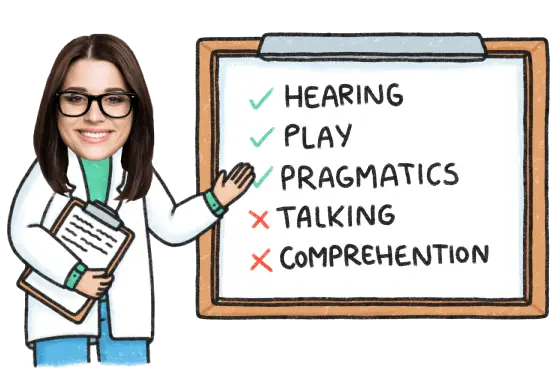
The author’s views are entirely his or her own and may not necessarily reflect the views of Blub Blub Inc. All content provided on this website is for informational purposes only and is not intended to be a substitute for independent professional medical judgement, advice, diagnosis, or treatment. Always seek the advice of your physician or other qualified health provider with any questions you may have regarding a medical condition. Never disregard professional medical advice or delay in seeking it because of something you have read on this website.
Related articles
25 speech and language terms every parent should know.
Whether we are speaking to teachers, health visitors, or speech therapists, there is a lot of new information for any parent to digest and understand. So,...
How Cathy White Utilizes Speech Blubs Pro in Her Speech Therapy Practice
In the ever-evolving field of speech therapy, incorporating technology can significantly enhance the learning experience for children with speech and language challenges. A dedicated speech…
Get started with Speech Blubs
Cancel anytime, hassle-free!
- Children's Health
- Common Symptoms
- Common Conditions
- Chronic Conditions
- View Full Guide
Common Speech and Language Disorders

Speech and language problems may make it hard for your child to understand and speak with others, or make the sounds of speech. They're common, affecting as many as one in 12 kids and teens in the U.S.
Kids with these disorders often have trouble when they learn to read and write, or when they try to be social and make friends. But treatment helps most children improve, especially if they start it early.
Adults can also have these disorders. It may have started in childhood, or they may have them because of other problems such as brain injuries, stroke , cancer , or dementia .
Speech Disorders
For children with speech disorders, it can be tough forming the sounds that make up speech or putting sentences together. Signs of a speech disorder include:
- Trouble with p, b, m, h, and w sounds at 1 to 2 years of age
- Problems with k, g, f, t, d, and n sounds between the ages of 2 and 3
- When people who know the child well find it hard to understand them
The causes of most speech disorders are unknown.
There are three major types:
Articulation: It’s hard for your child to pronounce words. They may drop sounds or use the wrong sounds and say things like “wabbit” instead of “rabbit.” Letters such as p, b, and m are easier to learn. Most kids can master those sounds by age 2. But r, l, and th sounds take longer to get right.
Fluency: Your child may have problems with how their words and sentences flow. Stuttering is a fluency disorder. That’s when your child repeats words, parts of words, or uses odd pauses. It’s common as kids approach 3 years of age. That’s when a child thinks faster than they can speak. If it lasts longer than 6 months, or if your child is more than 3.5 years old, get help.
Voice: If your child speaks too loudly, too softly, or is often hoarse, they may have a voice disorder. This can happen if your child speaks loudly and with too much force. Another cause is small growths on the vocal cords called nodules or polyps. They’re also due to too much voice stress.
Language Disorders
Does your child use fewer words and simpler sentences than their friends? These issues may be signs of a language disorder. For kids with this disorder, it’s hard to find the right words or speak in complete sentences. It may be tough for them to make sense of what others say. Your child may have this disorder if they:
- Don’t babble by 7 months
- Only speak a few words by 17 months
- Can’t put two words together by 2 years
- Have problems when they play and talk with other kids from the ages of 2 to 3
There are two major types of language disorders. It’s possible for a child to have both.
Receptive: This is when your child finds it hard to understand speech. They may find it hard to:
- Follow directions
- Answer questions
- Point to objects when asked
Expressive : If your child has trouble finding the right words to express themselves, they may have this type of language disorder. Kids with an expressive disorder may find it tough to:
- Ask questions
- String words into sentences
- Start and continue a conversation
It’s not always possible to trace the cause of language disorders. Physical causes of this type of disorder can include head injuries , illness, or ear infections . These are sometimes called acquired language disorders.
Other things that make it more likely include:
- A family history of language problems
- Being born early
- Down syndrome
- Poor nutrition
Doctors don’t always know what causes your child’s condition. Remember, these kinds of disorders have nothing to do with how smart your child is. Often, kids with language disorders are smarter than average.
Diagnosis and Treatment
Speech and language disorders are legally defined disabilities. Your child may get testing and treatment through your state’s early intervention program or local public schools. Some services are free.
Your child may see a speech language pathologist, or SLP. The SLP may try to find out if your child:
- Can follow directions
- Is able to name common objects
- Knows how to play with toys
- Can hold books the right way
The SLP will first check your child’s hearing. If that’s OK, the SLP will do tests to find out what kind of disorder may be present, if it’s a short-term problem or one that needs treatment, and what treatment plan to recommend.
How to Help Your Child
Children learn and grow at their own pace. The younger they are, the more likely they are to make mistakes. So you’ll want to learn the milestones. Know what skills your child should be able to master at a given age.
To help your child with their speech and language skills:
- Talk to your child, even as a newborn .
- Point to objects and name them.
- When your child is ready, ask them questions.
- Respond to what they say, but don’t correct mistakes.
- Read to your child at least 15 minutes a day.
If your child has one of these disorders, don’t assume they’ll outgrow it. But treatment does help most kids get better. The sooner they get it, the better the results.
Top doctors in ,
Find more top doctors on, related links.
- Children's Health News
- Children's Health Reference
- Children's Health Slideshows
- Children's Health Quizzes
- Children's Health Videos
- Find a Pediatrician
- ADHD in Children
- Baby Development
- BMI Calculator for Parents
- Children's Vaccines
- Kids' Dental Care
- Newborn & Baby
- Teen Health
- More Related Topics

Understanding Speech Impediments in Children
How do you know if your child has a speech impediment? Speech impediments in children are more common than you might think. They are a type of communication disorder where “normal” speech is disrupted. The disruption can include a lisp, stuttering, stammering, mis-articulation of certain sounds and more. Another commonly used phrase for speech impediments in children is speech disorder. Often, the causes of a speech impediment are unknown. However, sometimes there are physical impairments such as cleft palate or neurological disorders such as traumatic brain injury that may be the cause of the speech impairment. We have listed below five of the most common types of speech impediments in children and a general description of each. Of course, if you suspect your child may have a speech impairment of any kind, we encourage you to visit your pediatrician or hire a Speech Therapist for more information.
Common Types of Speech Impediments in Children

- Apraxia of Speech: Apraxia involves the inconsistent producing and rearranging of speech sounds. For instance potato may become totapo. This disorder may be developmental, where the symptoms have been evident from birth, or acquired. Acquired apraxia of speech generally results from a physical impairment such as injury or stroke.
- Speech Sound Disorder: A speech sound disorder involves difficulty producing certain sounds. The sounds could include /r/, /s/, /l/,/th/, /g/, /ch/ and /sh/. For example, a child may say “wabbit” instead of “rabbit”. Speech sound disorders are divided into two categories of speech disorders. The first is a Phonetic disorder or articulation disorder which involves the child having difficulty in learning to produce certain sounds physically. The second speech sound disorder is a Phonemic disorder. This type of speech impediment involves the child having difficulty learning the sound distinctions of a language. Luckily, this common speech impediment in children is often easily corrected. Tongue placement tools or working with a Speech Therapist can really help your child.
- Cluttering: Cluttering is a speech disorder characterized by a rapid rate making speech difficult to understand, which in turn affects the person’s fluency. This can happen if the person has a tendency to speak really fast. This can also result when an individual continues to repeat themselves in order to try to make them understood. Cluttering is also referred to as fluency disorder.
- Lisp : A lisp is a speech impediment in children who are struggling to produce the /s/ sound clearly. A frontal lisp is when a child pushes his tongue too far forward in the mouth. A lateral lisp produces a “slushy” sound because too much air is escaping out the sides of a child’s mouth.
We have identified only five of the most common types of speech impediments in children. There are a number of other speech disorders beyond what we have listed. Please refer to our free eBook for additional information. The good news is that with consistent speech therapy and early intervention, speech impediments in children can be overcome.

UCLA aims to rebuild trust after protests with new ‘free speech’ zones, more security, dialogue

- Copy Link URL Copied!
UCLA, riven by violent protests over the Israel-Hamas war last spring, on Thursday unveiled a plan to rebuild campus trust and connections with enhanced safety measures, broader dialogue across differences, free speech guidelines and stronger efforts to support diversity.
In a letter to the Bruins community three weeks before fall classes begin, interim Chancellor Darnell Hunt said the “challenging spring” underscored the pressing need for new initiatives to repair the damage to campus trust and unity.
UCLA drew global attention in April, when video footage captured a violent nighttime attack on a pro-Palestinian encampment by counterprotesters armed with metal pipes, wooden planks, fists and fireworks. Law enforcement forcibly dismantled the encampment shortly afterward, arresting 231 people, including about 90 students. The security lapses prompted UCLA to reassign the police chief. Faculty members outraged by the police actions held votes to censure and express no confidence in then-Chancellor Gene Block, which failed.
Meanwhile, a congressional committee summoned Block to grill him on his handling of antisemitism and three Jewish students sued UCLA for failing to protect their access to campus walkways and buildings, which they said Palestinian supporters blocked after asking if they were Zionists.
In an effort to move forward, Hunt said his four-point plan would aim for a “safer, stronger UCLA” featuring reviews of policing practices, campuswide efforts to build community and updated guidelines on free speech activities.
“As a campus that promotes inclusive excellence, we must protect the ability for Bruins of all backgrounds and identities to feel safe, welcome, respected and able to participate fully in campus life,” Hunt wrote. “We may not always see eye-to-eye on important and topical issues, but if we engage one another with respect and empathy, we can both grow as people and maintain a healthy academic environment for everyone.”

Students kick off fall semester with protests that adhere to UC/CSU zero-tolerance bans
Student protesters at UC Berkeley and San Francisco State stayed in line with regulations being enforced at California’s public universities this school year, but made it clear they intend to keep their concerns about the war in Gaza front and center.
Aug. 29, 2024
UCLA’s new free speech guidelines are in line with strict new University of California guidance on protest management. All 10 UC campuses have been directed by UC President Michael V. Drake to post rules around free speech and notify students about them before their fall terms begin, a move to comply with a state legislative mandate. UCLA and six other UC undergraduate campuses begin instruction the week of Sept. 23; UC Berkeley and UC Merced started last month.
UCLA’s policies, issued Wednesday, are effective immediately as interim rules until they are finalized after a 60-day public review process. They specify approved free speech zones, omitting Royce Quad as one of them. The quad was a major conflict zone last spring as the site of both the Palestine Solidarity Encampment and a pro-Israel area featuring a massive jumbotron that projected video loops of the Oct. 7 attack by Hamas militants on southern Israel.
The free speech zones include Bruin Walk and Plaza outside the student union and Pauley Pavilion, along with the east lawn area next to the Janss steps.
The rules prohibit tents, campsites and other temporary structures on UCLA property without prior approval and blocking of access to walkways and buildings. Amplified sound will be banned during marches but otherwise generally allowed with some restrictions. Concealing one’s identity while breaking laws or rules will be prohibited. In addition, the rules detail procedures for holding campus events and reiterate that the campus will be closed from midnight to 6 a.m. for activities with limited exceptions.
In addition to new free speech policies, the plan includes a renewed focus on campus safety and well-being. After the melee overnight on April 30, UCLA created a new Office of Campus Safety , hired former Sacramento Police Chief Rick Braziel to head it and moved all policing and emergency management programs to that office. The office, along with the University of California, is reviewing the safety protocols and police response to the protests last spring.

Zero tolerance at UC campuses in new order banning encampments, masking, blocking paths
The University of California will enforce rules against encampments, blocking pathways and wearing some face masks as students begin returning to campus after a protest-filled spring, the system president told the UC community.
Aug. 19, 2024
But Hunt said the office will expand its responsibilities beyond protest management. A 2022 report on campus safety noted that students, faculty and staff expressed concerns not only about campus policing but also mental health, protection from COVID, racism and sexism, active-shooter and earthquake preparedness and sexual assault. UCLA will include such broader issues in the expanded charge as it continues with listening sessions, Hunt said.
UCLA will also launch several programs aimed at building understanding between those who disagree. Across the UC system, many students, faculty and administrators say the differences over the Israel-Hamas war have ripped their campuses apart in unparalleled ways. Hunt said a first step in healing those divides is “seeing one another as real people shaped by complex backgrounds and experiences — not as simple stereotypes.”
UCLA will roll out a new speaker series this fall offering “challenging but empathetic conversations” on topical issues. The first event will feature Yasmeen Abu Fraiha, an Israeli Bedouin physician and fellow with the Middle East Initiative at Harvard’s Kennedy School.
“Speaking Across Conflicts” workshops will aim to strengthen skills for constructive conversations across charged political differences. New programs for student internships and teaching fellowships about effective dialogue are also planned. Many of the expanded programs will be housed in the UCLA Bedari Kindness Institute and headed by David Myers, a professor of Jewish history who has long been involved in bridge-building efforts.
“In a diverse community such as ours, part of our learning and growth comes from engagement with viewpoints we may not agree with or readily understand,” Hunt wrote. “While this may be uncomfortable, it is also what helps us deepen our thinking, weigh different approaches and consider new ways of looking at an issue. Ultimately, it advances truth, knowledge and understanding.”
Hunt also said UCLA would continue to look for ways to foster greater support for its diverse community. Its Office of Civil Rights, for instance, is currently reviewing reports of antisemitism, along with anti-Arab and Islamophobic discrimination, to understand how that affected student experiences.
“UCLA is a spectacular place but it is by no means perfect,” Hunt said. “A commitment to rigorously studying the challenges we have faced and how we have addressed them — and making changes based on those findings — is essential if UCLA is to best serve its important academic mission and meet the needs of its students, faculty and staff.”
More to Read

As students return to Columbia, the epicenter of a campus protest movement braces for disruption
Sept. 3, 2024

‘It feels like a fortress.’ California students return to college amid tighter security over protests
Aug. 28, 2024

Judge orders UCLA to ensure equal campus access to Jewish students after pro-Palestinian protests
Aug. 13, 2024
Sign up for Essential California
The most important California stories and recommendations in your inbox every morning.
You may occasionally receive promotional content from the Los Angeles Times.

Teresa Watanabe covers education for the Los Angeles Times. Since joining the Times in 1989, she has covered immigration, ethnic communities, religion, Pacific Rim business and served as Tokyo correspondent and bureau chief. She also covered Asia, national affairs and state government for the San Jose Mercury News and wrote editorials for the Los Angeles Herald Examiner. A Seattle native, she graduated from USC in journalism and in East Asian languages and culture.
More From the Los Angeles Times

World & Nation
Man believed to be planning attack on Israeli Consulate killed in gun battle with Munich police

Israel’s Netanyahu demands open-ended control of Gaza’s border with Egypt
Sept. 4, 2024

Opinion: How students can address their backgrounds on college applications, even without affirmative action

UC, CSU wary over legislation allowing them to hire undocumented students. Newsom to decide

IMAGES
VIDEO
COMMENTS
However, some speech disorders persist. Approximately 5% of children aged three to 17 in the United States experience speech disorders. There are many different types of speech impediments, including: Disfluency. Articulation errors. Ankyloglossia. Dysarthria. Apraxia. This article explores the causes, symptoms, and treatment of the different ...
The /l/ sound is made with the tongue elevated to touch the alveolar ridge or, the bumps on the hard palate behind the front teeth. Have your child watch your mouth as you say 'la-la-la', then, let her have a try. Having your child practice in front of a mirror can be a particularly useful tool as well, giving her the opportunity to trouble ...
Common causes of childhood speech impediments include: Autism spectrum disorder: A neurodevelopmental disorder that affects social and interactive development. Cerebral palsy: A congenital (from birth) disorder that affects learning and control of physical movement. Hearing loss: Can affect the way children hear and imitate speech.
The last step is to use the sound correctly in longer sentences and finally, conversation. Activities for L: Love - Make a list of people your child " L -oves" with good "l" sounds. Listening - Encourage your child to " L -isten" for the "L" in a list of words or during a storybook activity. Lights - Describe different ...
Rhotacism as a speech impediment. Using a strict classification, only about 5%-10% of the human population speaks in a completely normal way. Everyone else suffers from some type of speech disorder or another. For children of any language, the R sounds are usually the hardest to master and often end up being the last ones a child learns.
Lisps are just one type of speech impediment. Other common speech impediments include: Lambdacism. Trouble saying the letter L. People with lambdacism often use the R sound as a substitute.
Although a child should have their /l/ sounds mastered by age 6, it's better to begin correcting these speech productions sooner than later. When thinking about speech therapy, another factor to consider is overall speech intelligibility. If these speech errors are making your child hard to understand, speech therapy is generally recommended.
Spasmodic Dysphonia (SD) is a chronic long-term disorder that affects the voice. It is characterized by a spasming of the vocal chords when a person attempts to speak and results in a voice that can be described as shaky, hoarse, groaning, tight, or jittery. It can cause the emphasis of speech to vary considerably.
Articulation disorder is a problem with making certain sounds, such as "sh." Phonological process disorder is a pattern of sound mistakes. This includes not pronouncing certain letters. What causes speech sound disorders in a child? Often, a speech sound disorder has no known cause. But some speech sound errors may be caused by: Injury to ...
stroke. traumatic brain injury. degenerative neurological or motor disorder. injury or illness that affects your vocal cords. dementia. Depending on the cause and type of speech impairment, it may ...
The SLP can also help decide if you have a speech problem or speak with an accent. An accent is the unique way that groups of people sound. Accents are NOT a speech or language disorder. Treatment for Speech Sound Disorders. SLPs can help you or your child say sounds correctly and clearly. Treatment may include the following:
The interdental lisp is a common speech impediment characterized by specific speech sounds made by the tongue protruding between the front teeth when articulating the "s" and "z" sounds, resulting in these sounds being perceived as "th.". This misplacement of the tongue directly hampers speech clarity, impacting both the speaker's ...
Use of gestures — When individuals use gestures to communicate instead of words, a speech impediment may be the cause. Inappropriate pitch — This symptom is characterized by speaking with a strange pitch or volume. In children, signs might also include a lack of babbling or making limited sounds.
5 Common Speech Disorders in Children: Articulation Disorder: An articulation disorder is a speech sound disorder in which a child has difficulty making certain sounds correctly. Sounds may be omitted or improperly altered during the course of speech. A child may substitute sounds ("wabbit" instead of "rabbit") or add sounds improperly ...
Gender: Male children are more likely to develop a speech sound disorder; Family history: Children with family members living with speech disorders may acquire a similar challenge.; Socioeconomics: Being raised in a low socioeconomic environment may contribute to the development of speech and literacy challenges.; Pre- and post-natal challenges: Difficulties faced during pregnancy such as ...
There are three general categories of speech impairment: Fluency disorder. This type can be described as continuity, smoothness, rate, and effort in speech production. Voice disorder. A voice ...
Speech disorders, impairments, or impediments, are a type of communication disorder in which normal speech is disrupted. [1] This can mean fluency disorders like stuttering, cluttering or lisps.Someone who is unable to speak due to a speech disorder is considered mute. [2] Speech skills are vital to social relationships and learning, and delays or disorders that relate to developing these ...
3 Types Language Disorders. Specific Language Impairment. Aphasia. Language-Based Learning Disabilities. Key Takeaways about Speech Impediments. A speech impediment relates to the way an individual produces or articulates specific sounds. One example of this is stuttering. Under the umbrella of a speech impairment lies several different types ...
Signs of a speech disorder include: Trouble with p, b, m, h, and w sounds at 1 to 2 years of age; Problems with k, g, f, t, d, and n sounds between the ages of 2 and 3;
See the Speech Sound Disorders Evidence Map for summaries of the available research on this topic.. The scope of this page is speech sound disorders with no known cause—historically called articulation and phonological disorders—in preschool and school-age children (ages 3-21).. Information about speech sound problems related to motor/neurological disorders, structural abnormalities, and ...
Speech Sound Disorder: A speech sound disorder involves difficulty producing certain sounds. The sounds could include /r/, /s/, /l/,/th/, /g/, /ch/ and /sh/. For example, a child may say "wabbit" instead of "rabbit". Speech sound disorders are divided into two categories of speech disorders. The first is a Phonetic disorder or ...
Jason Heffler, the author of a new children's book Tongue Tied, is encouraging celebrities to speak out about their stutters because kids who struggle with the speech impediment still feel ...
Dempsey L, Skarakis-Doyle E (2010) Developmental language impairment through the lens of the ICF: An integrated account of children's functioning. ... Learning from people with a history of childhood communication disorder. International Journal of Speech-Language Pathology 20(1): 142-151. Crossref. PubMed. Web of Science.
UCLA's new free speech guidelines are in line with strict new University of California guidance on protest management. All 10 UC campuses have been directed by UC President Michael V. Drake to ...